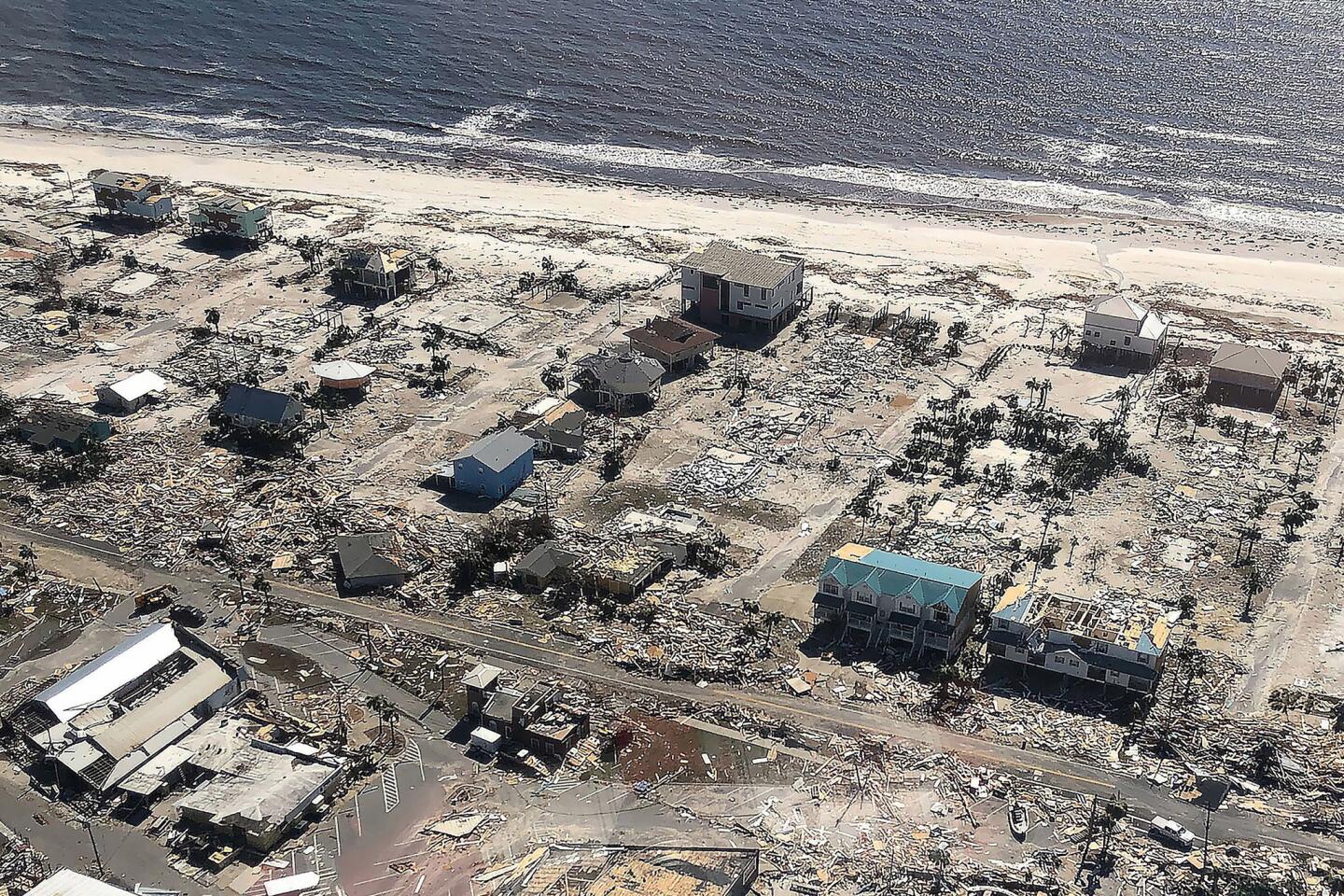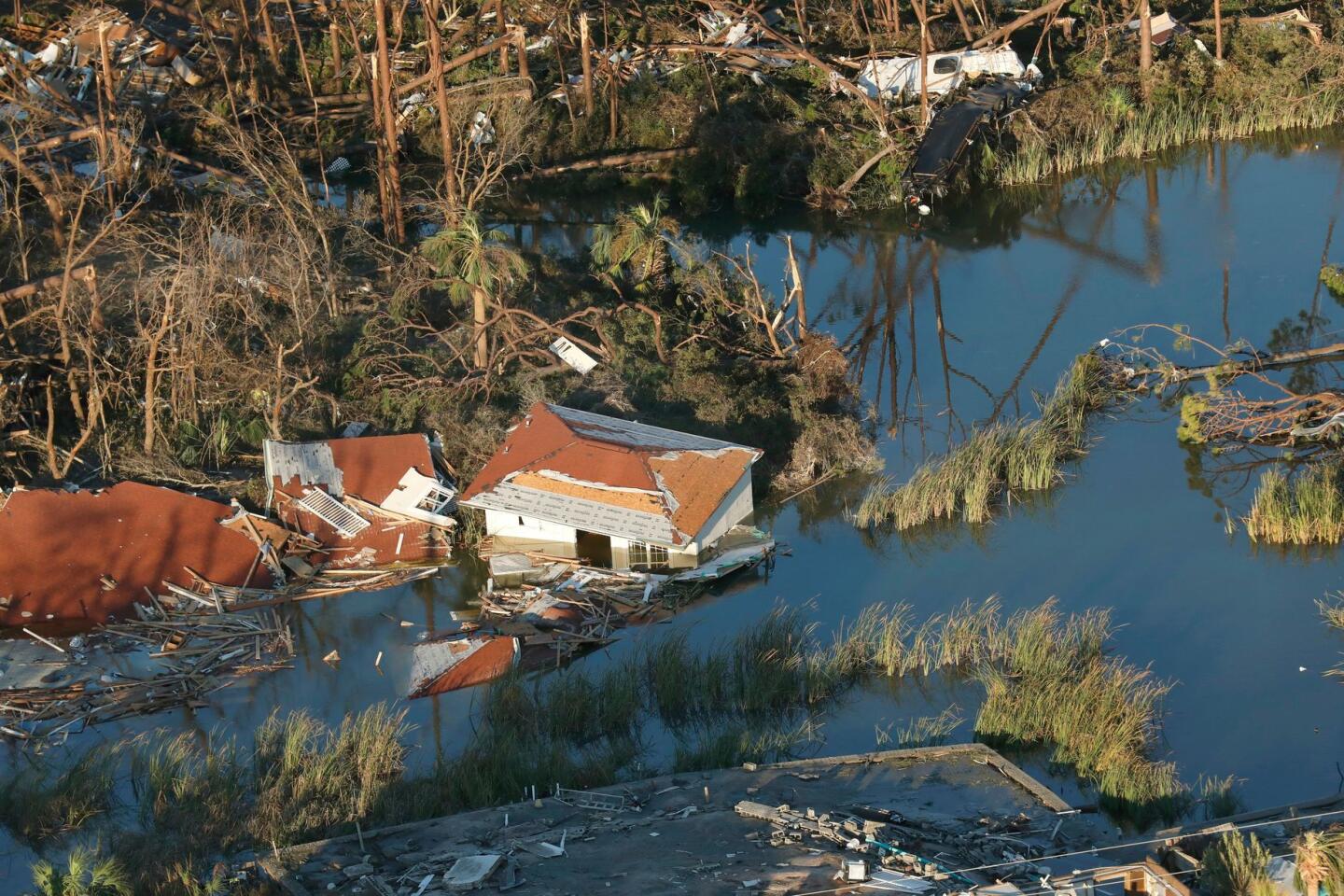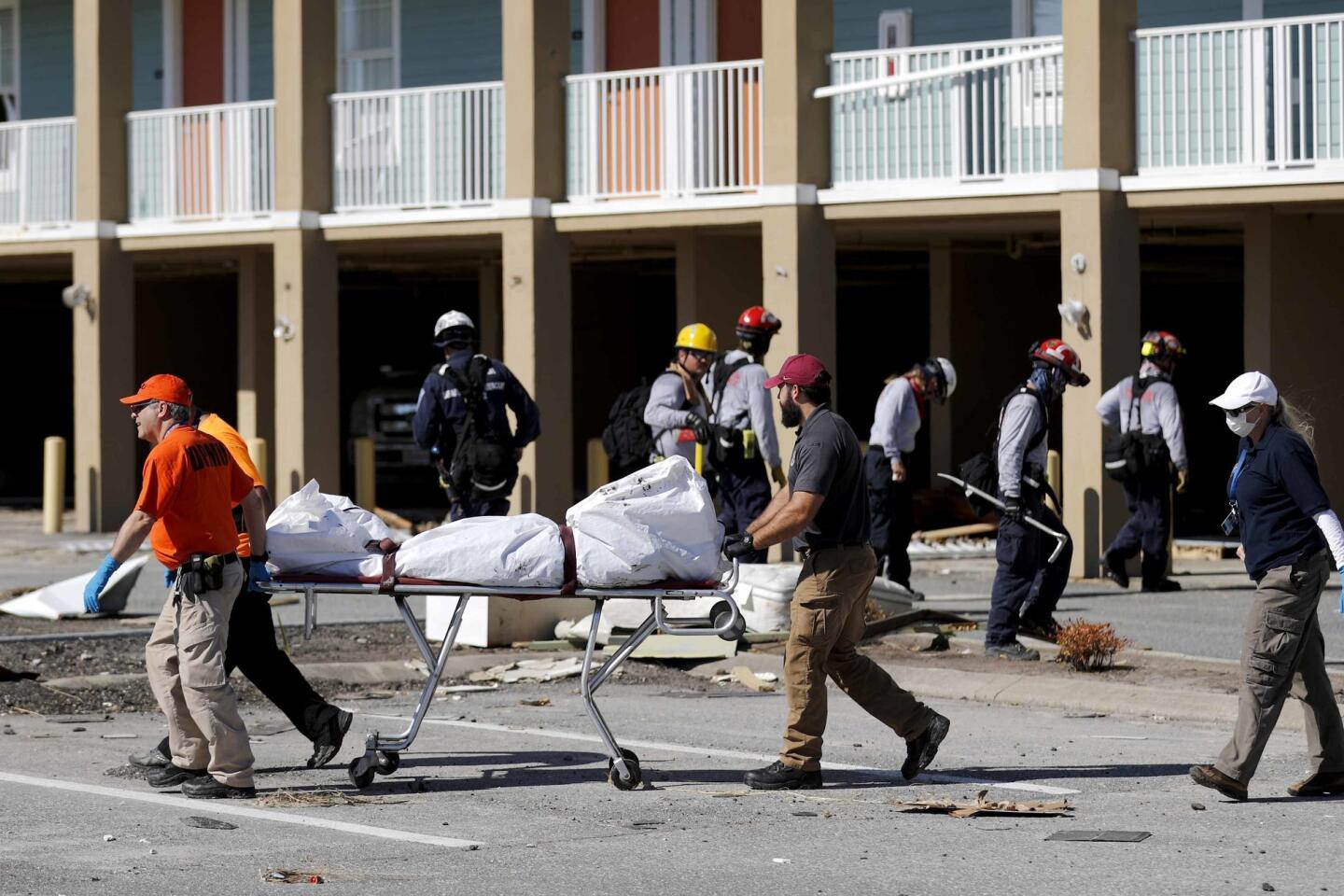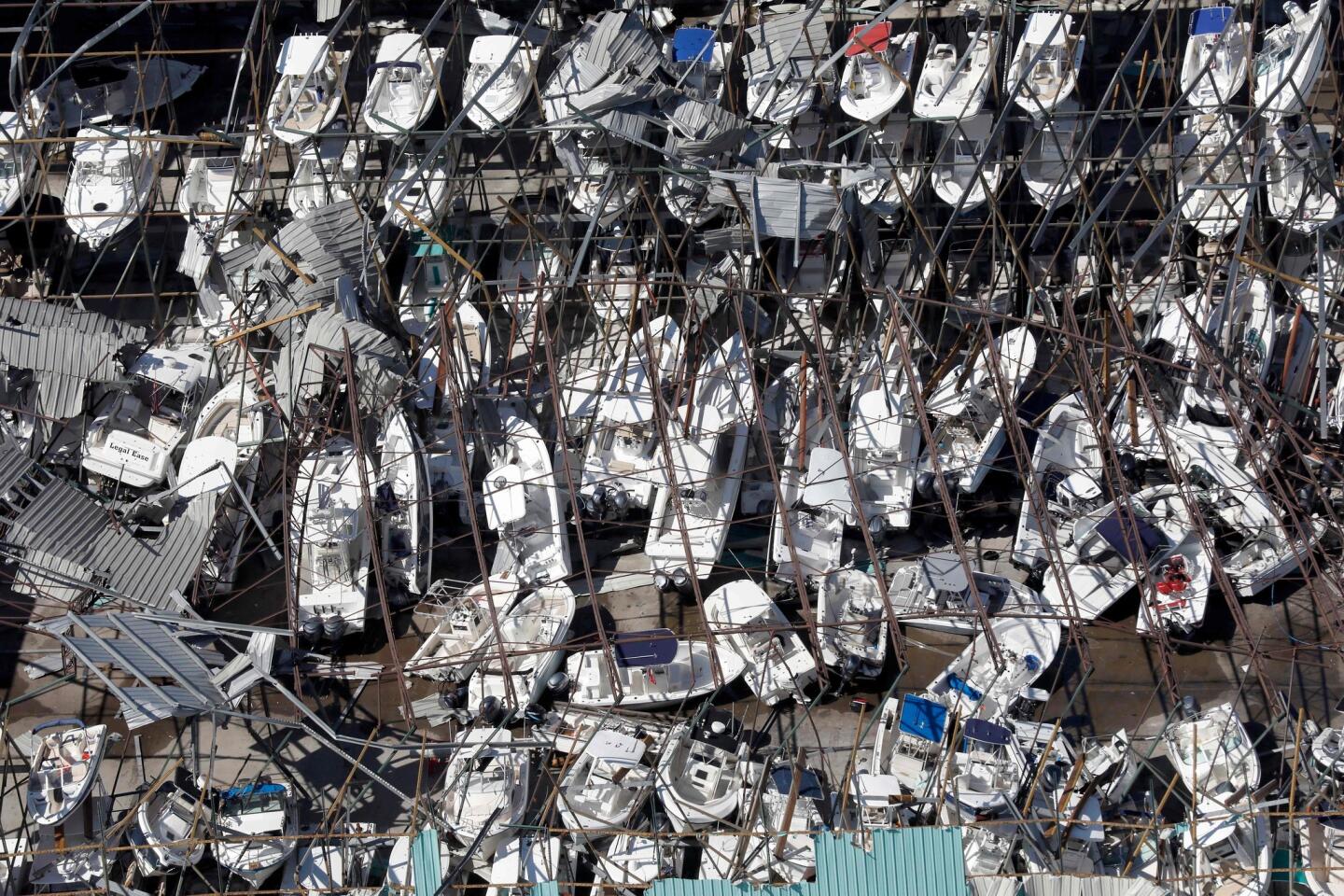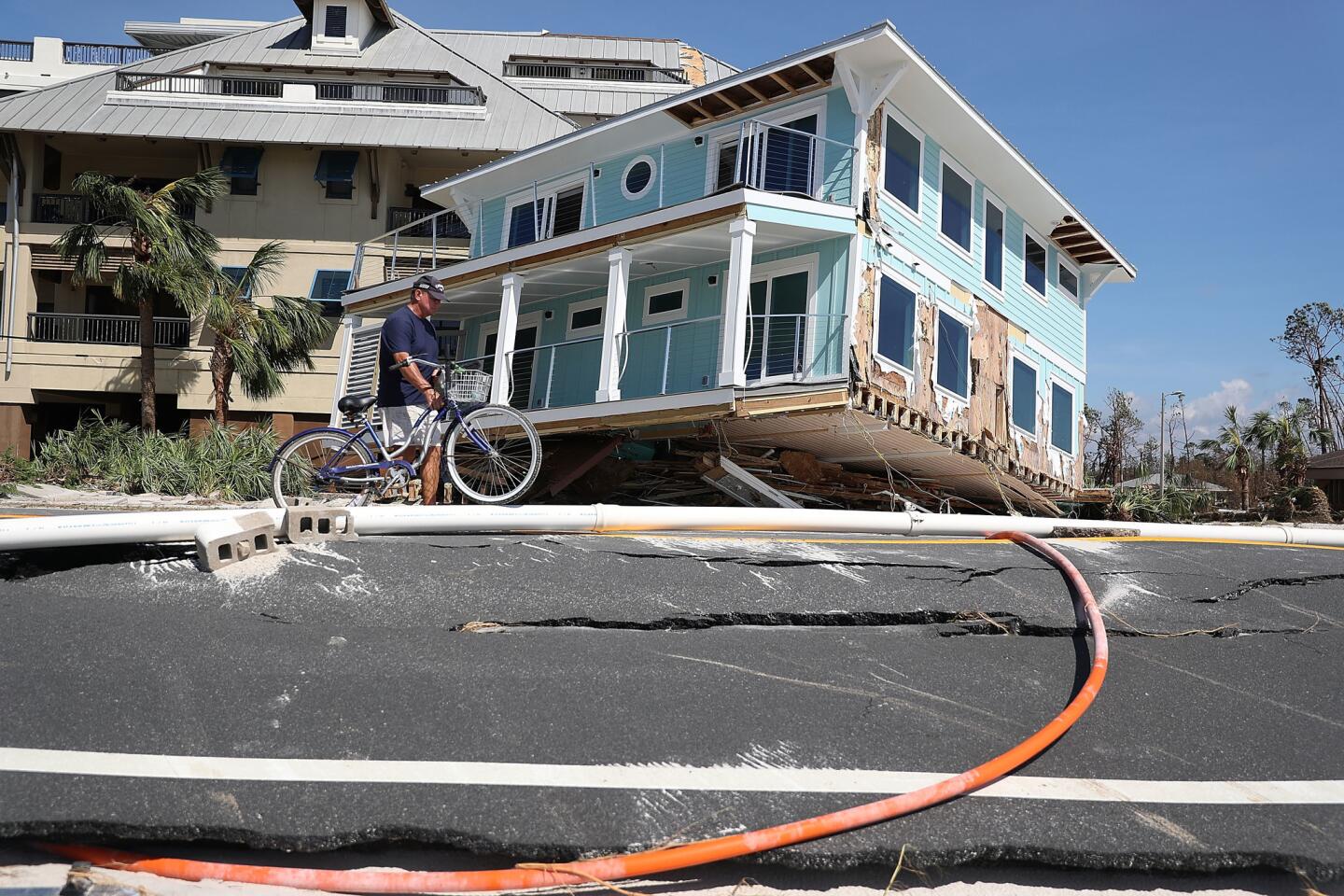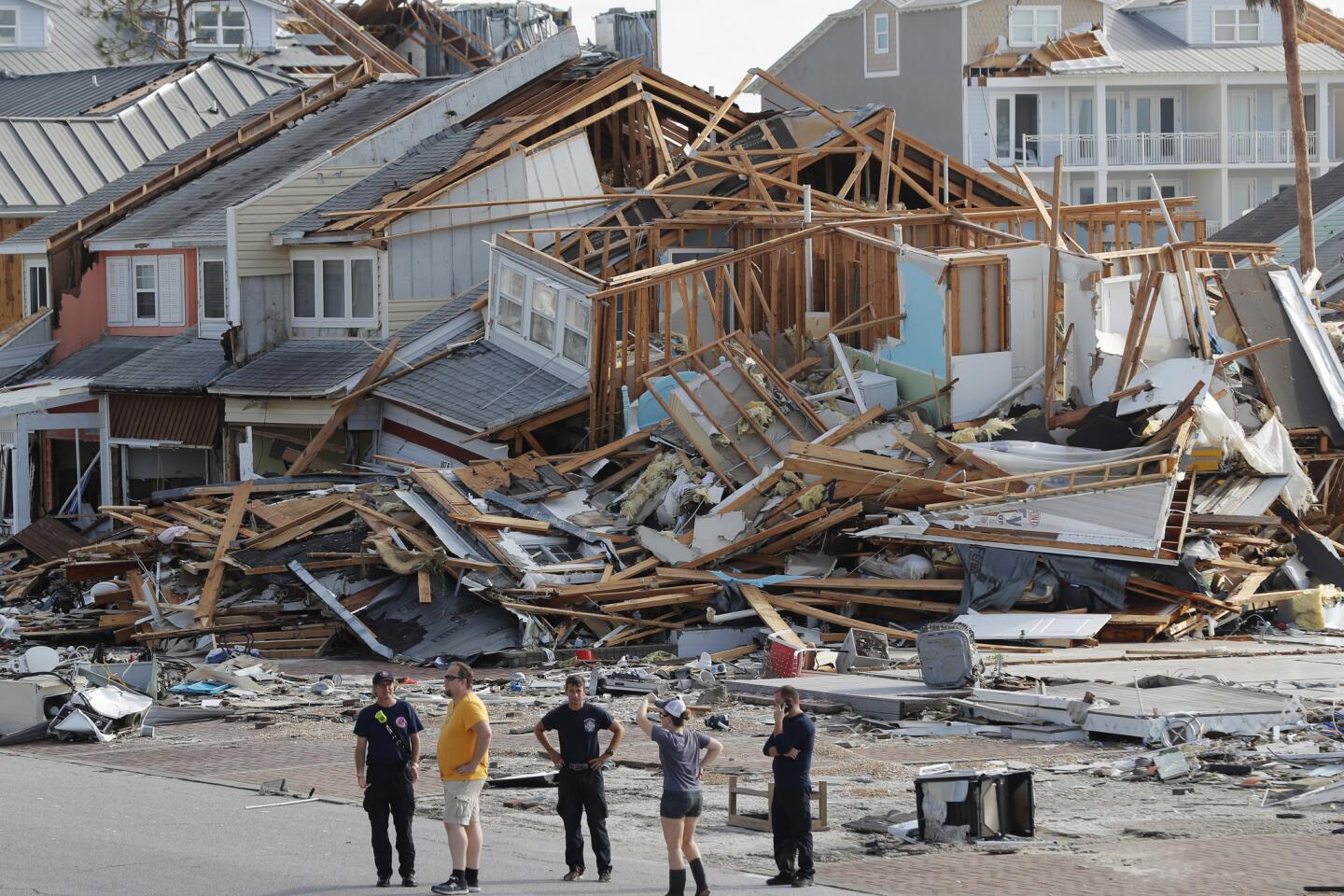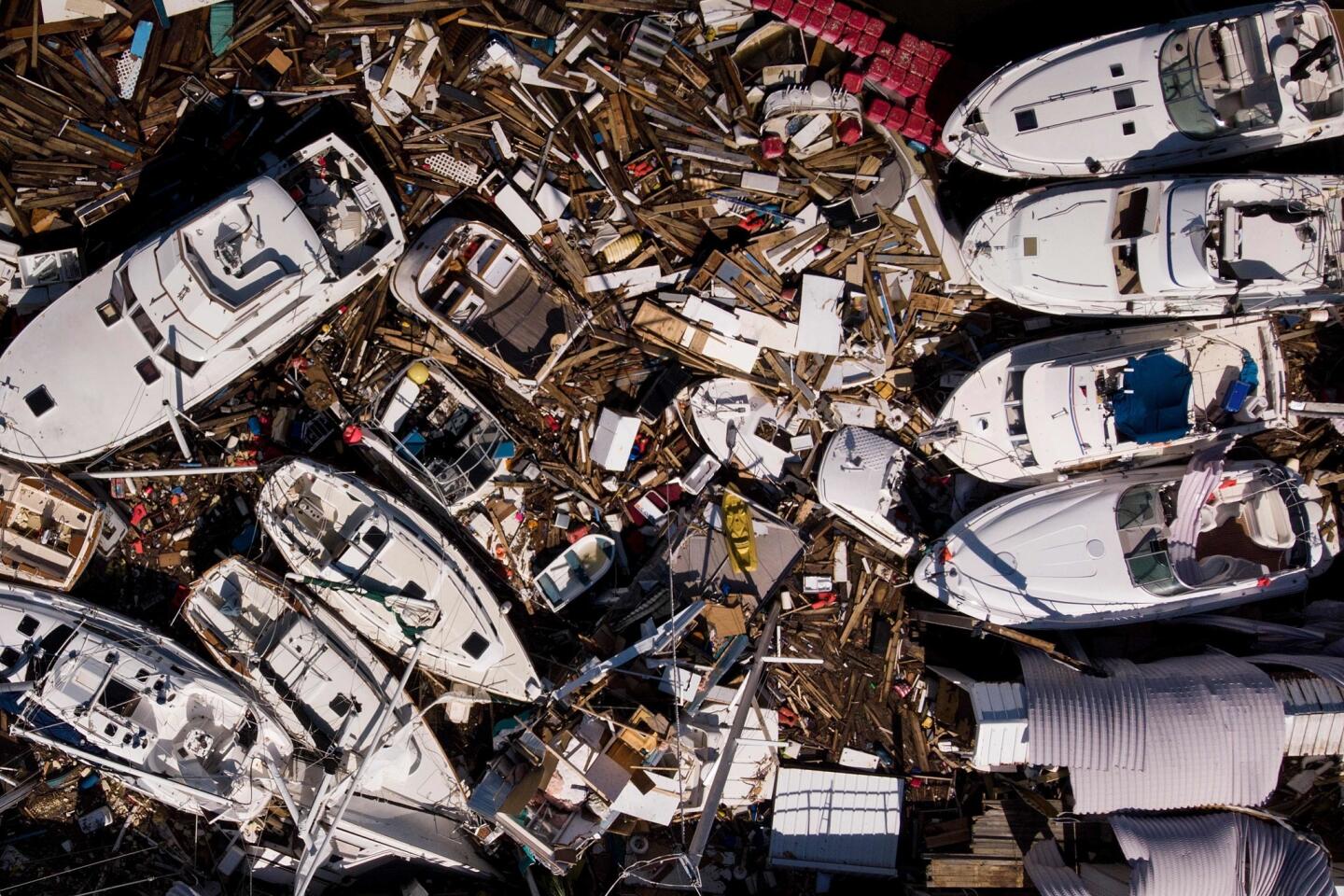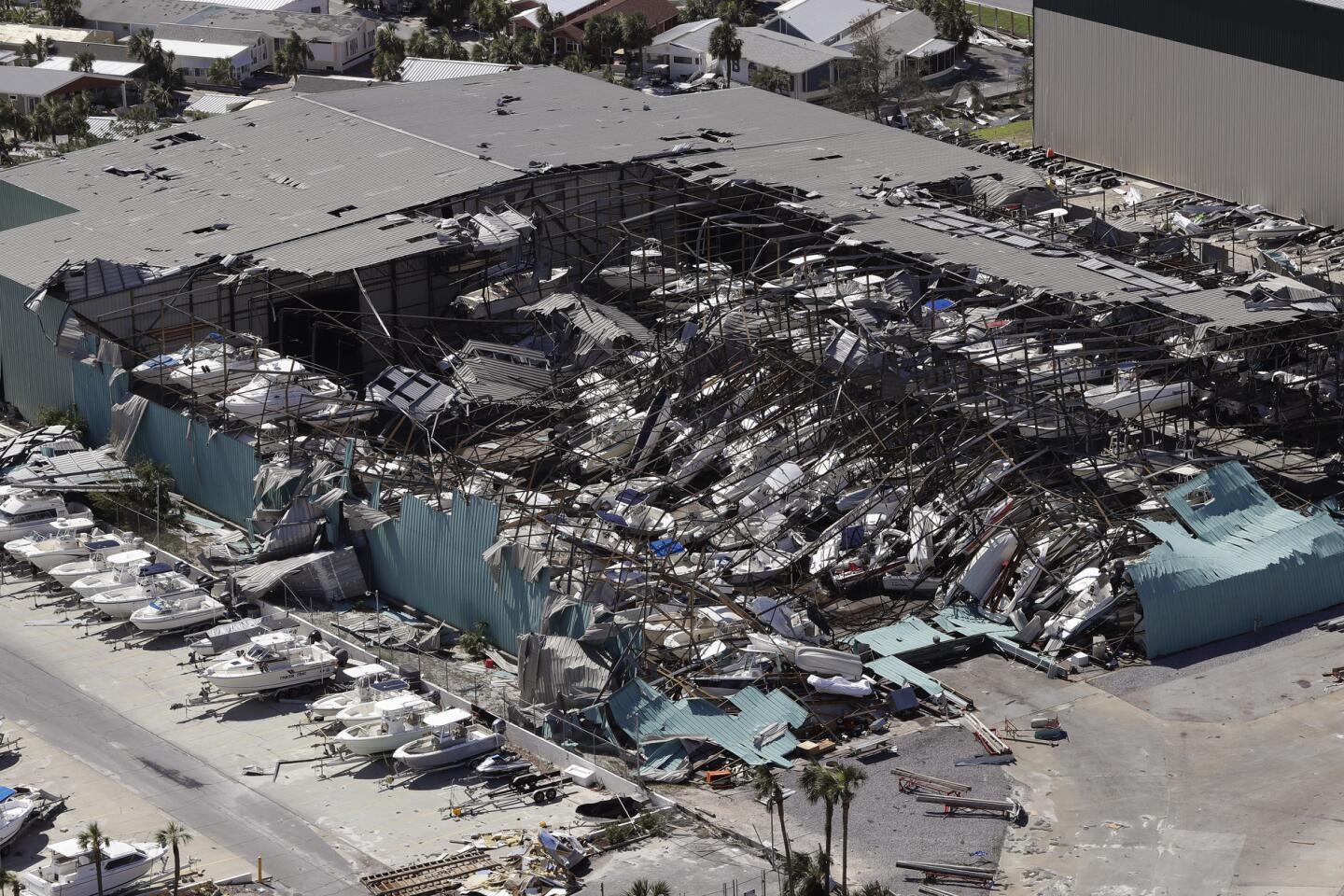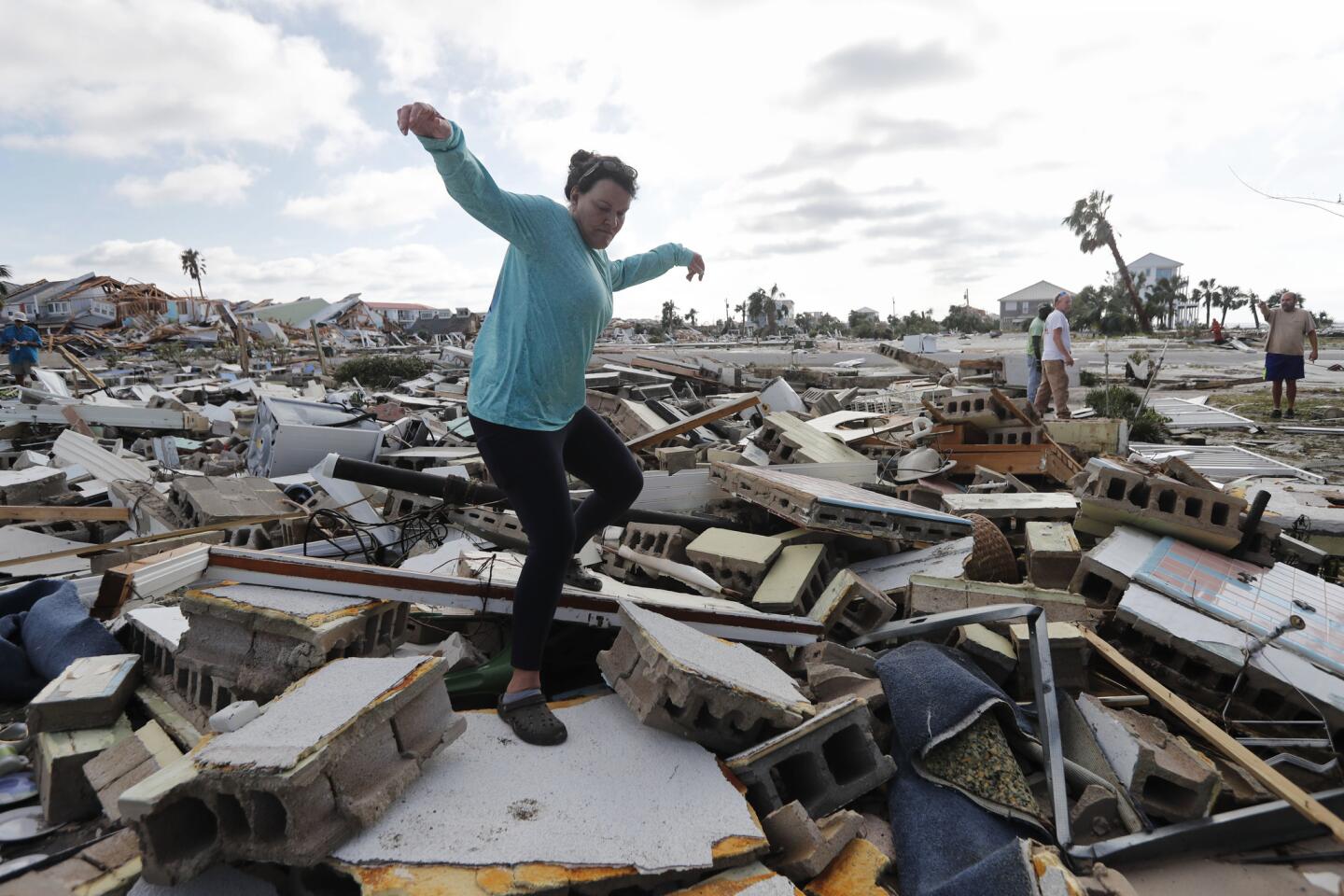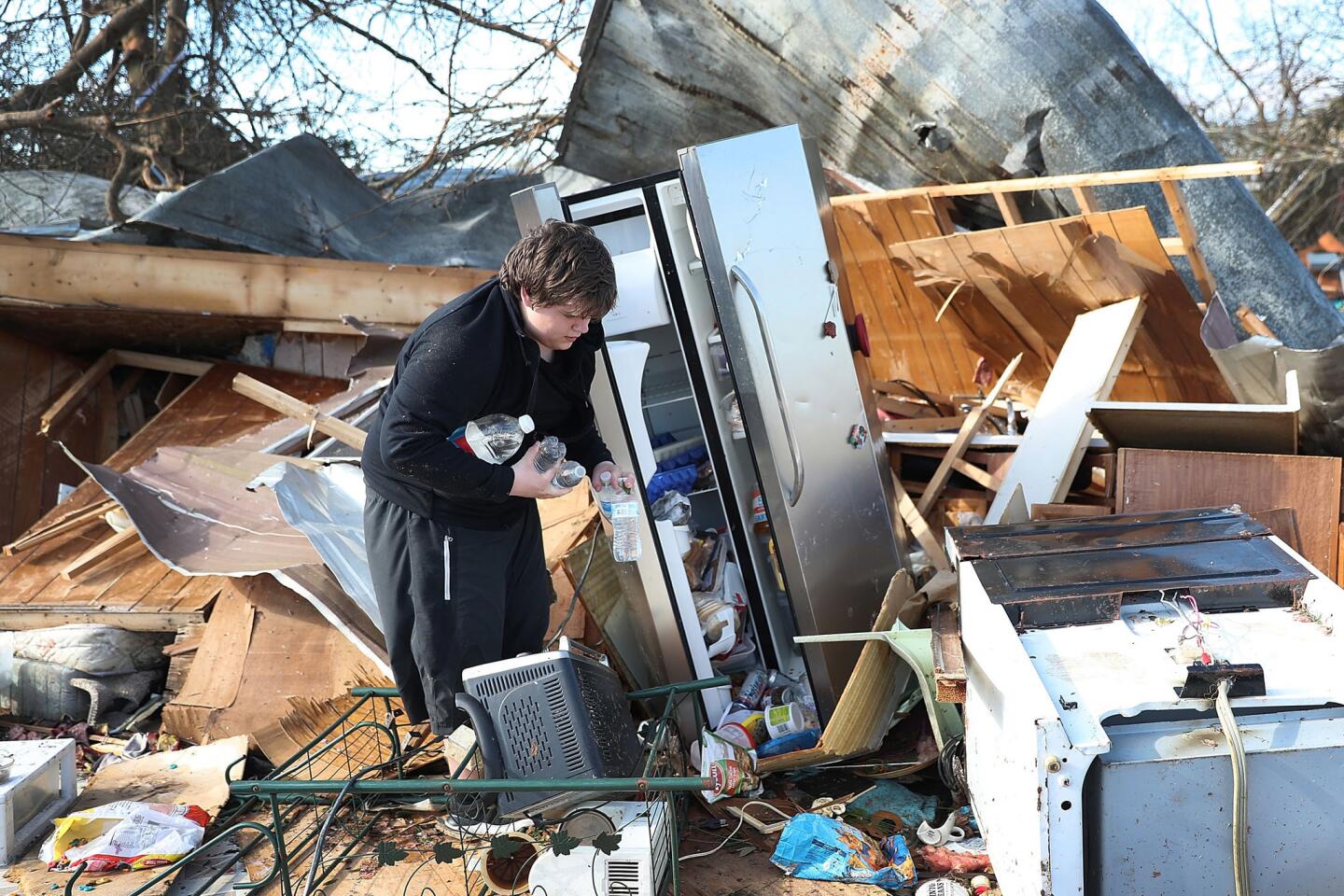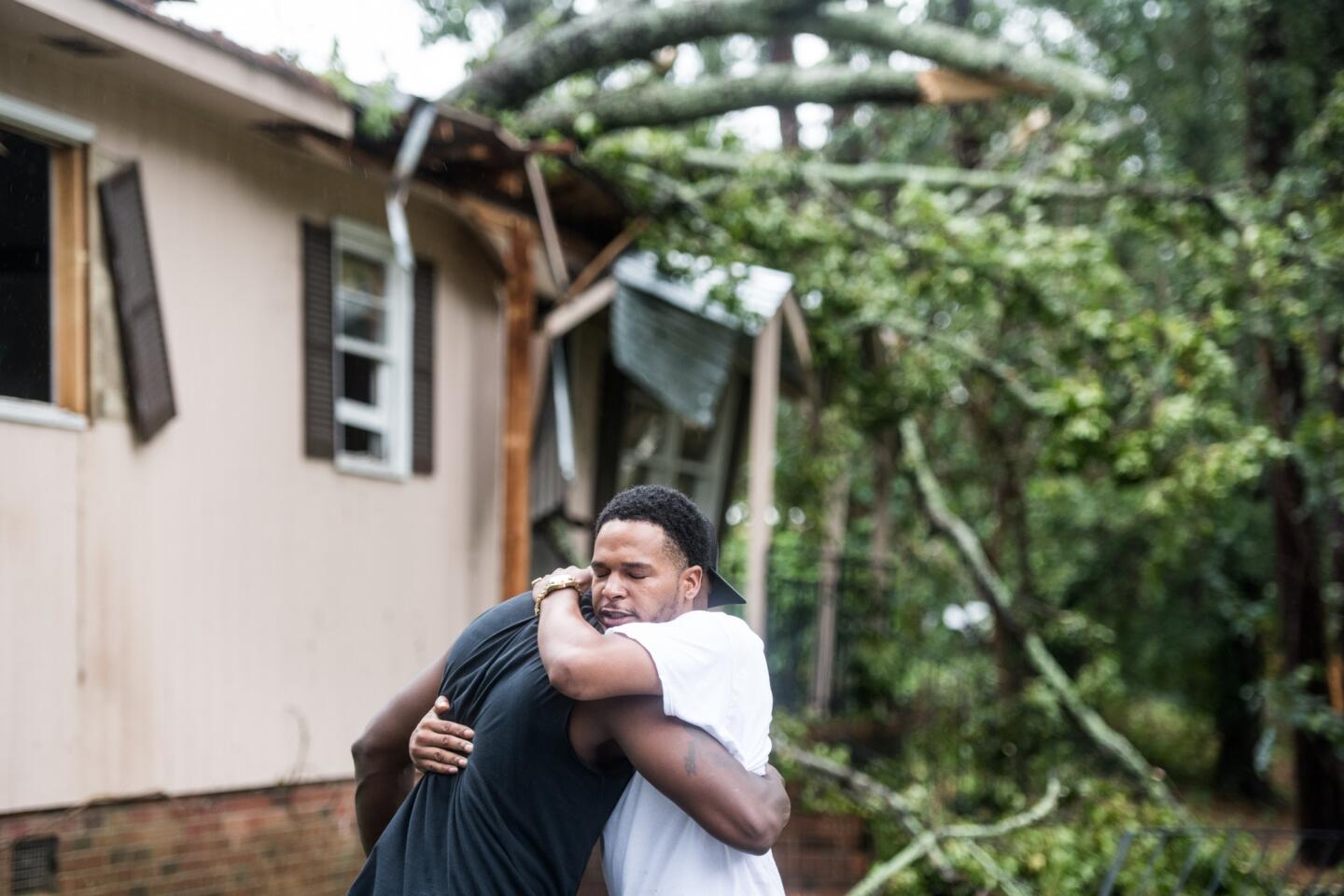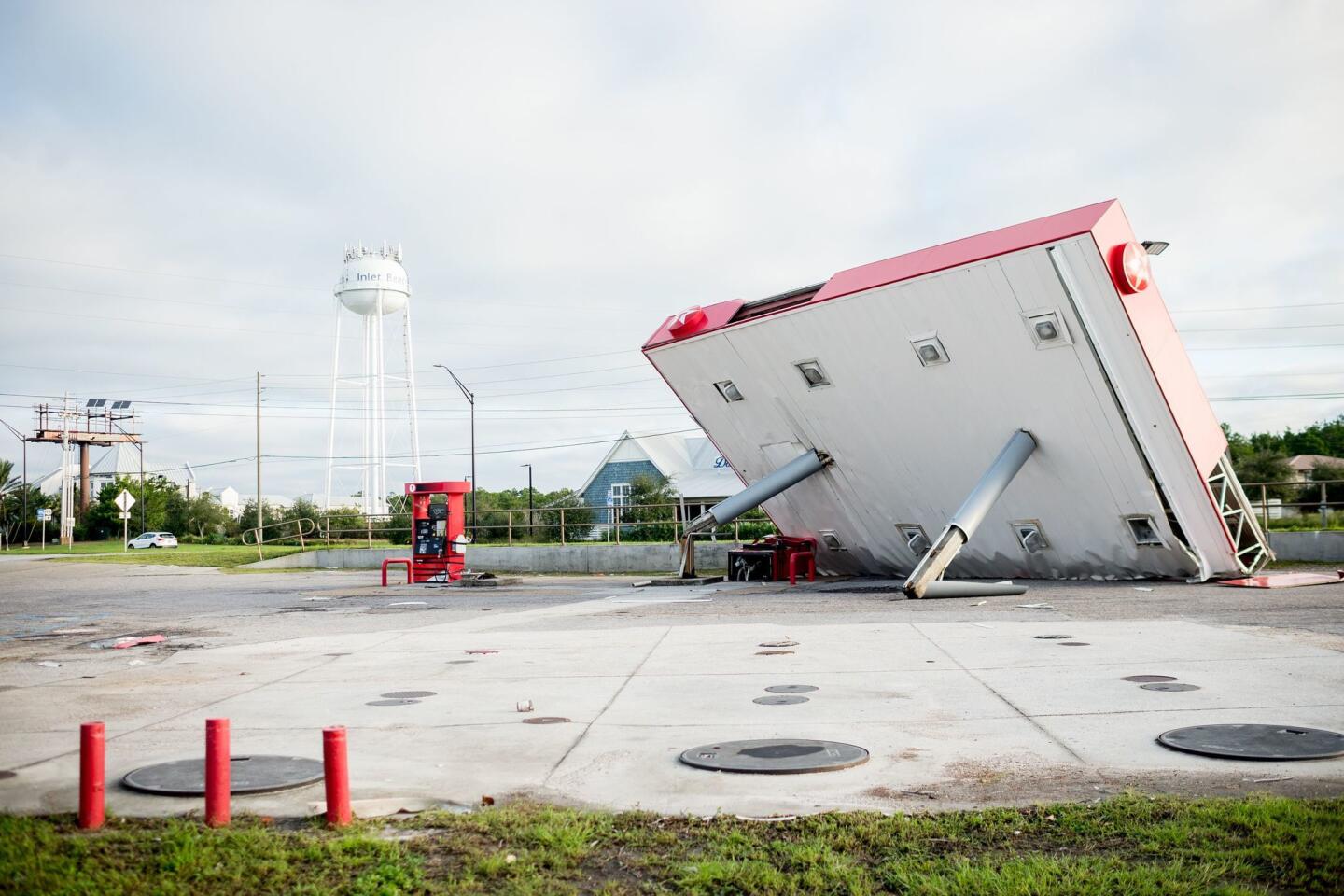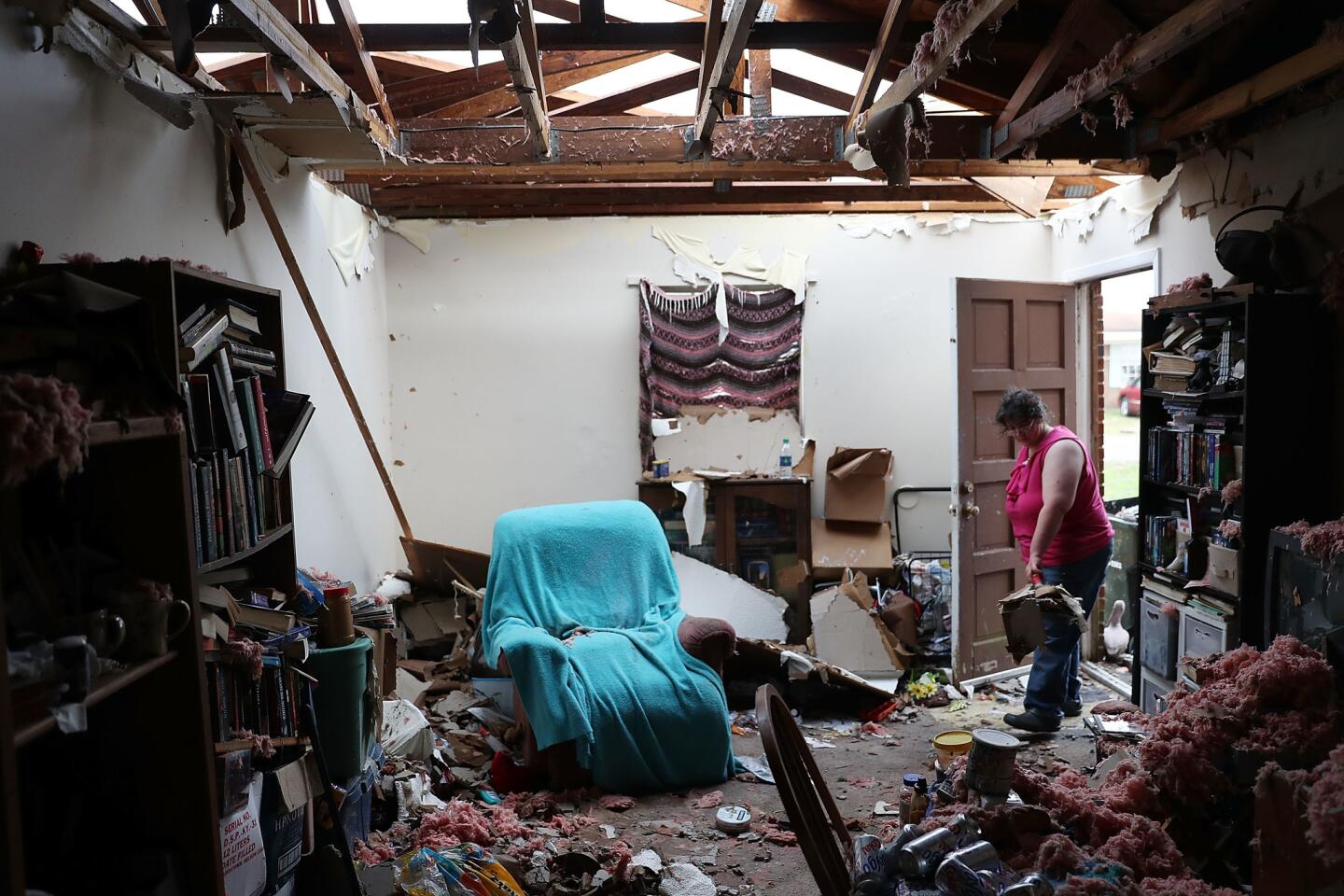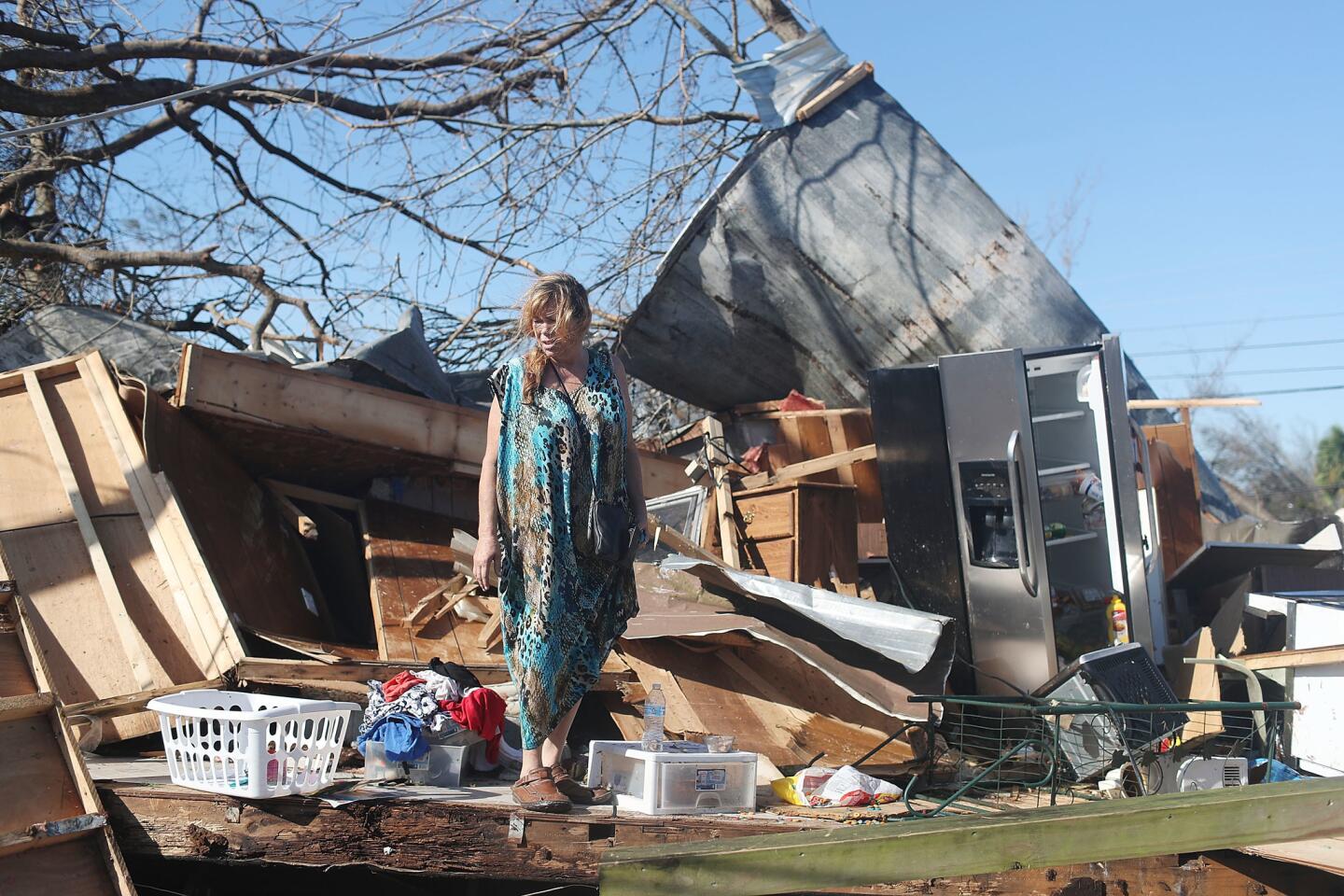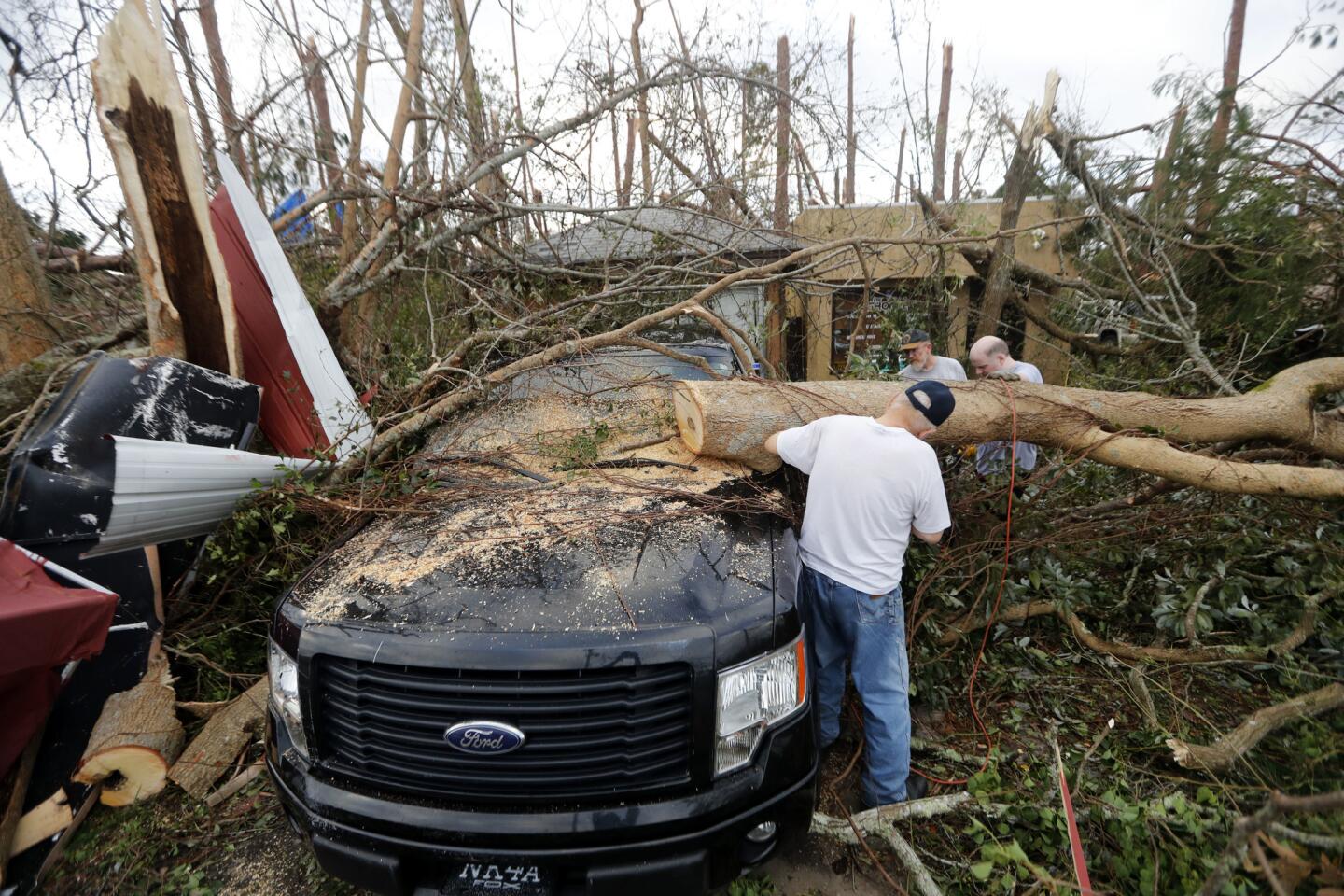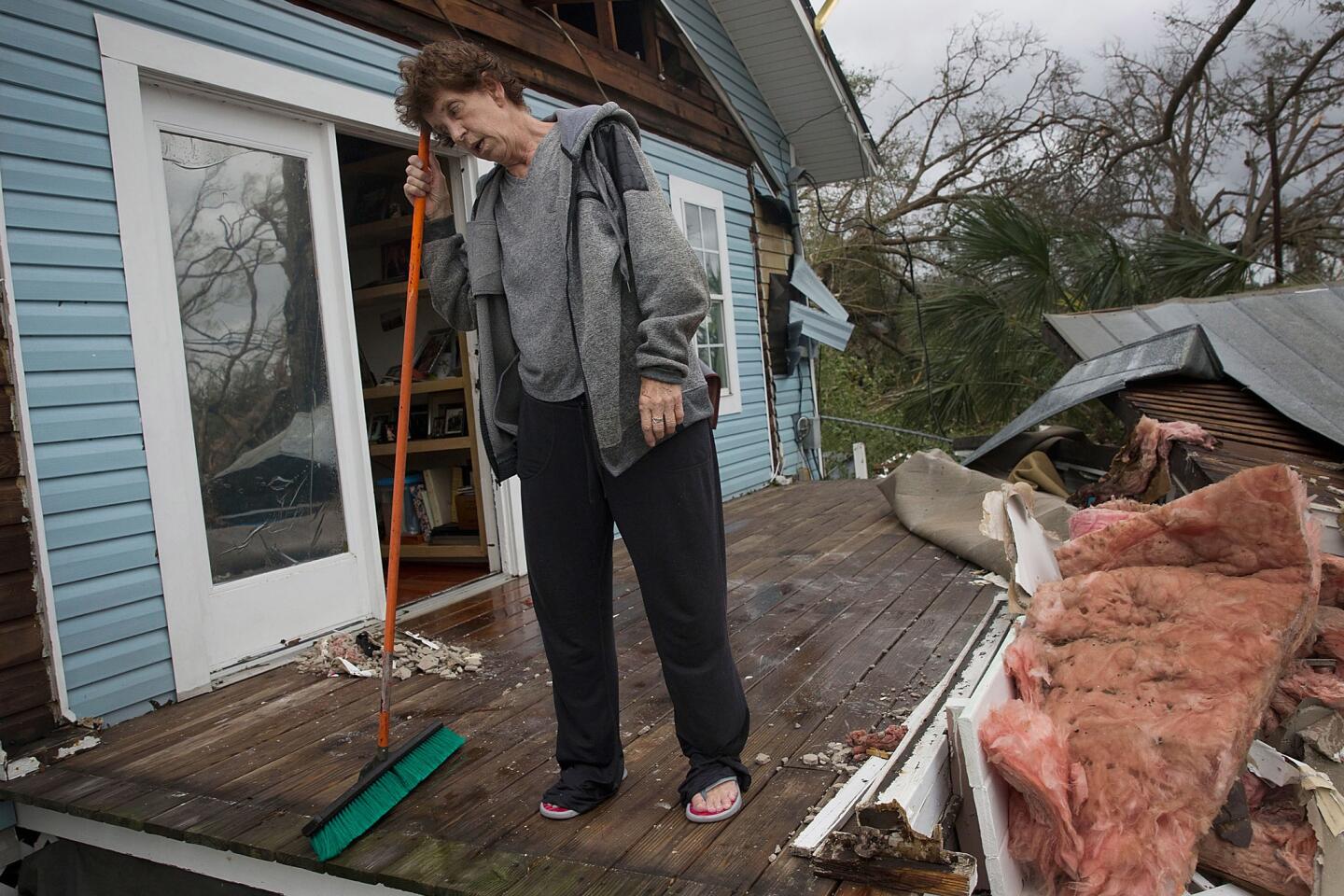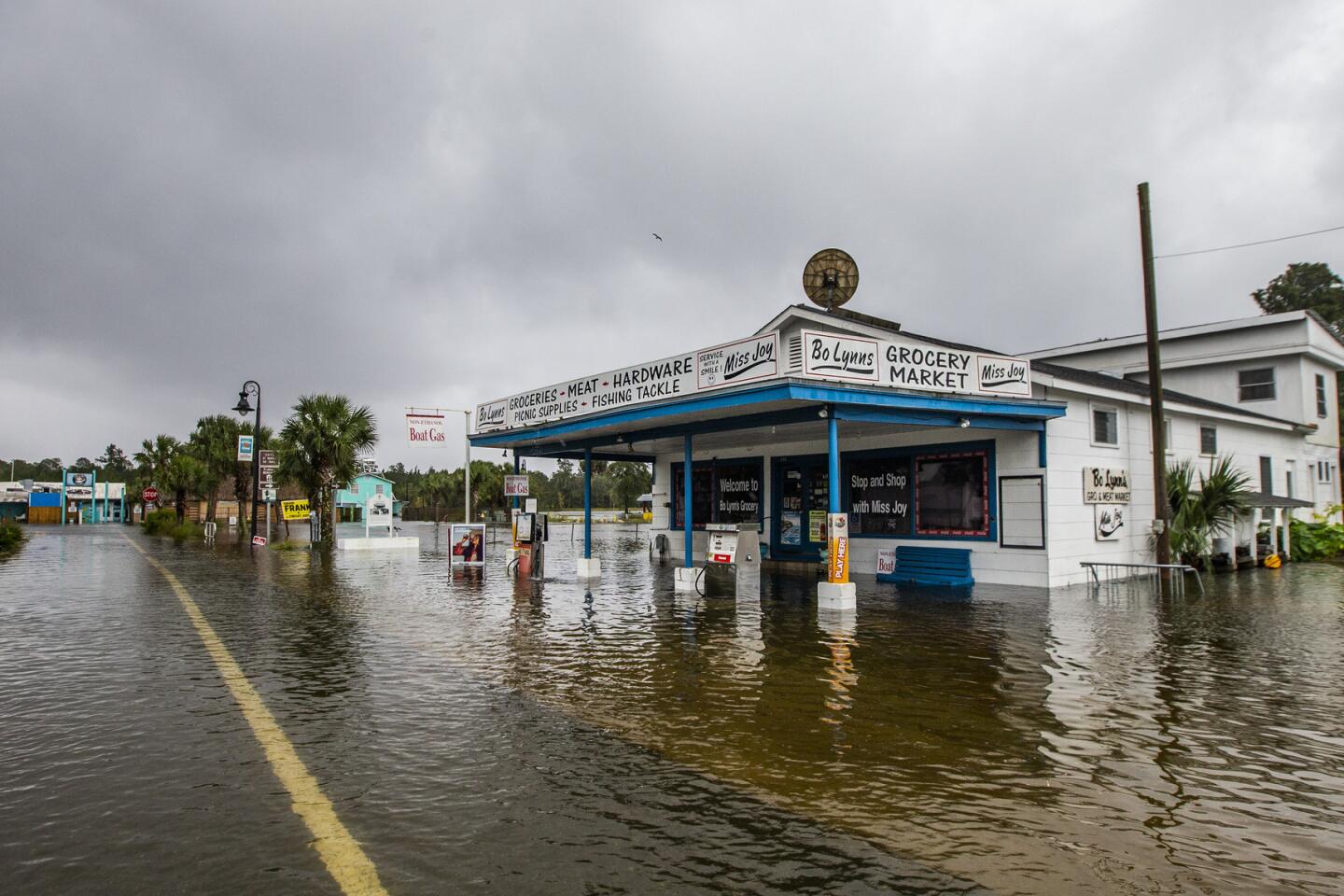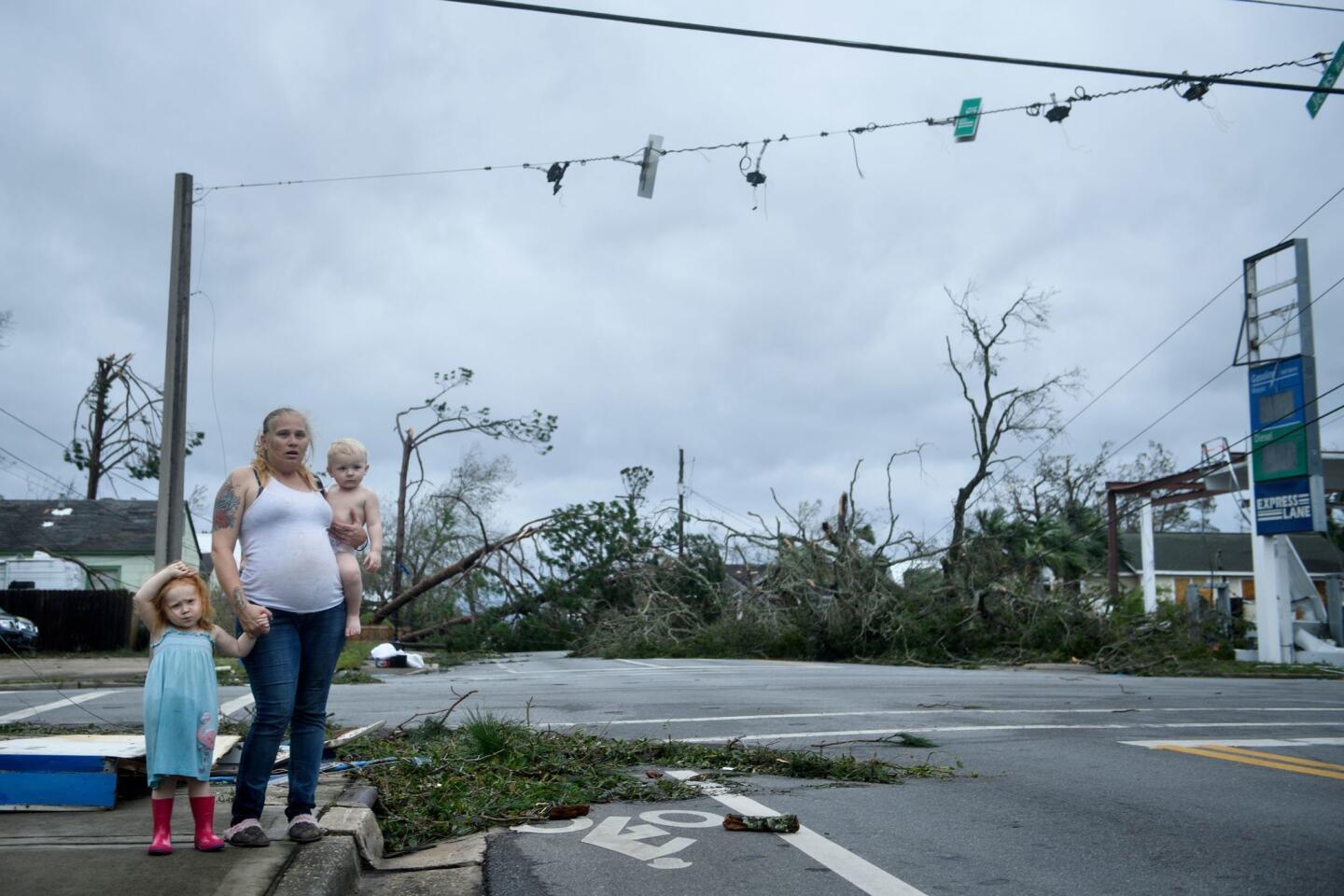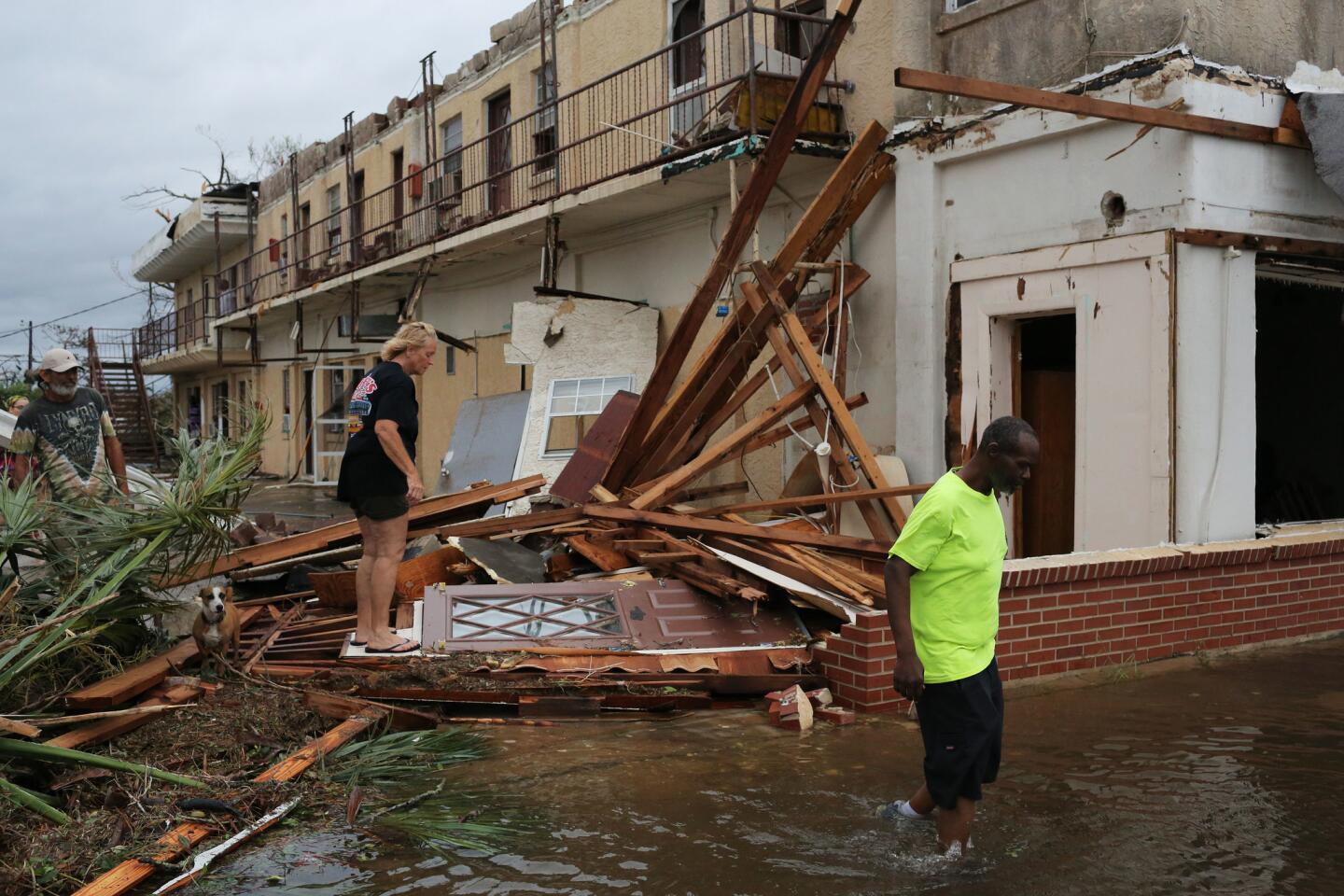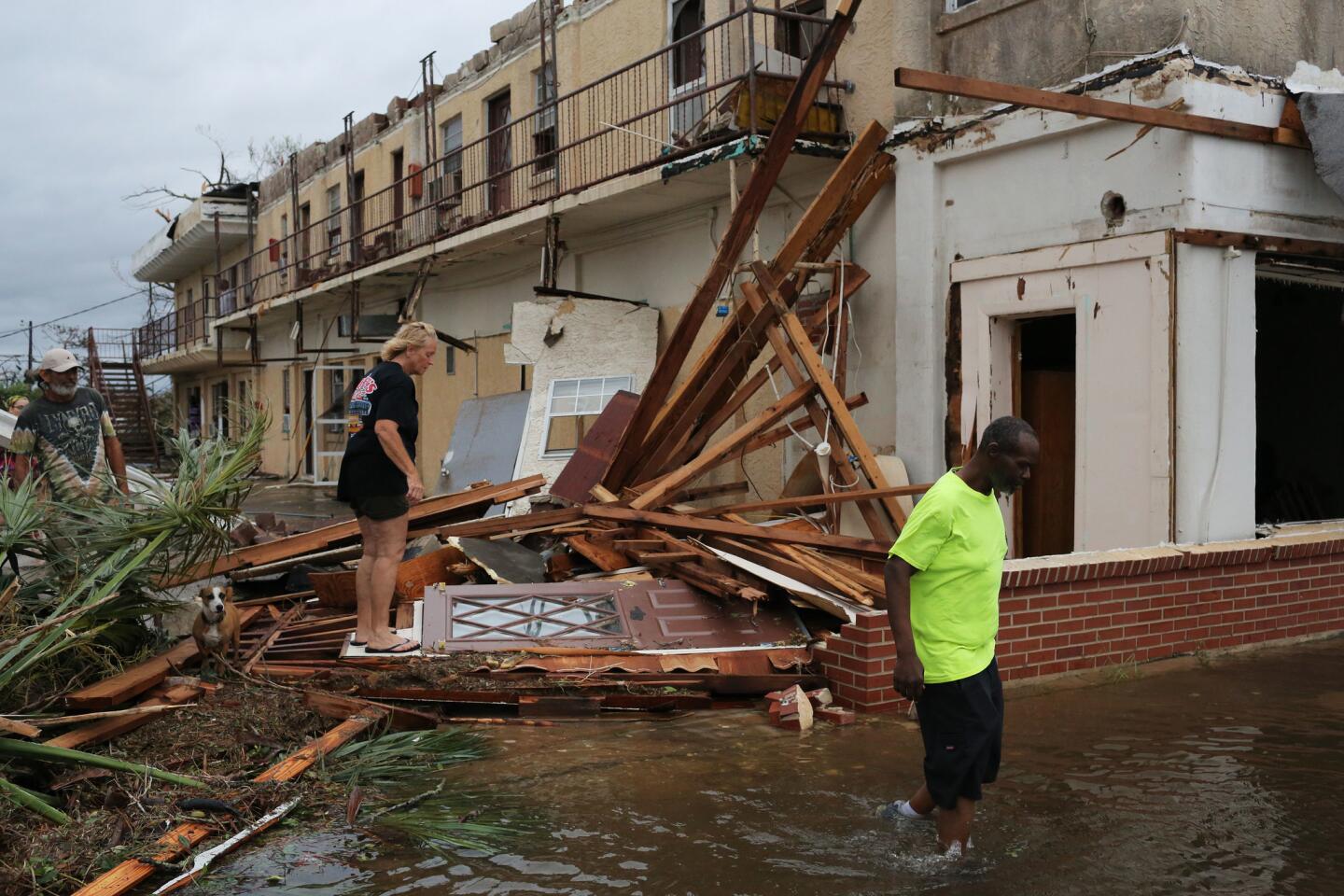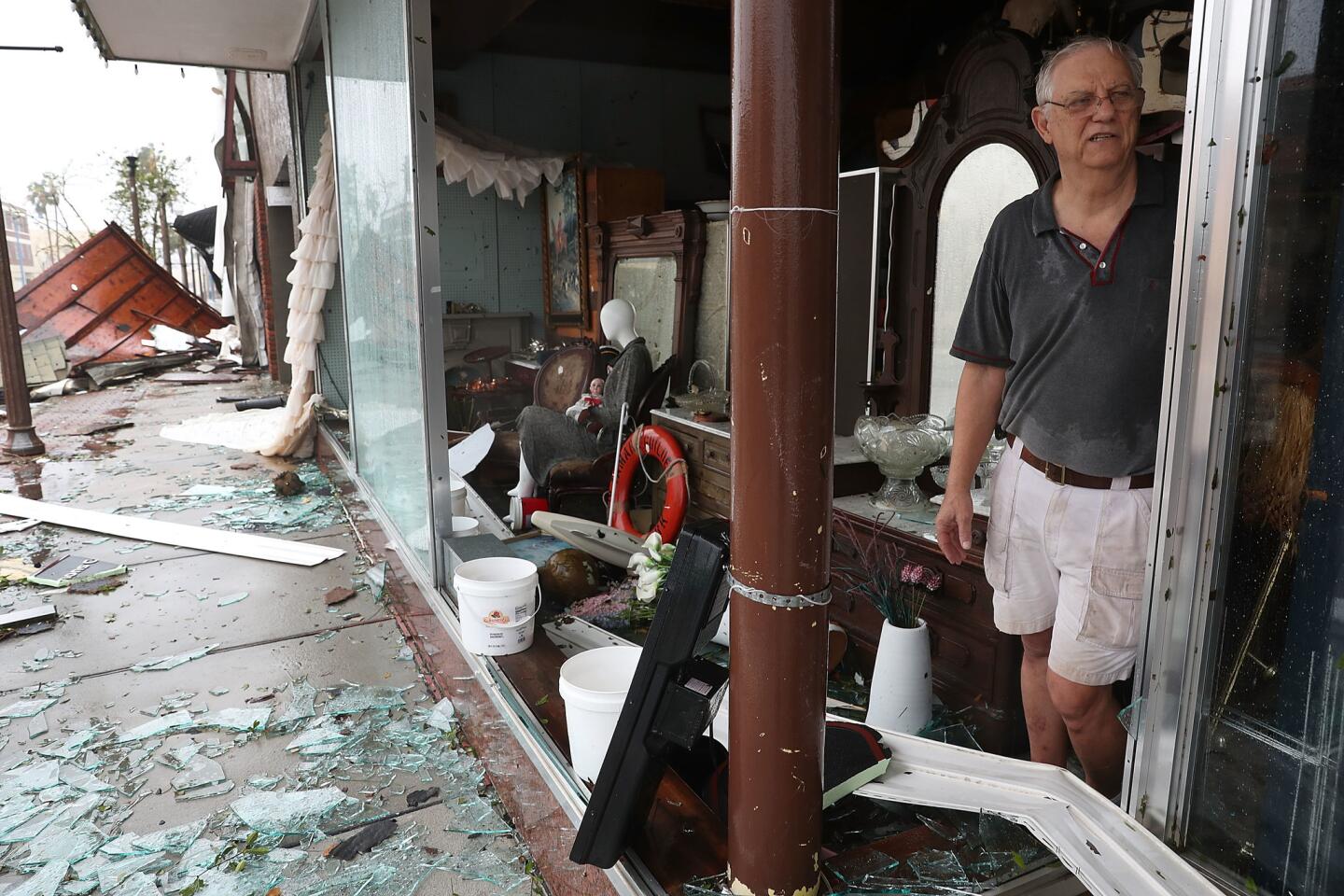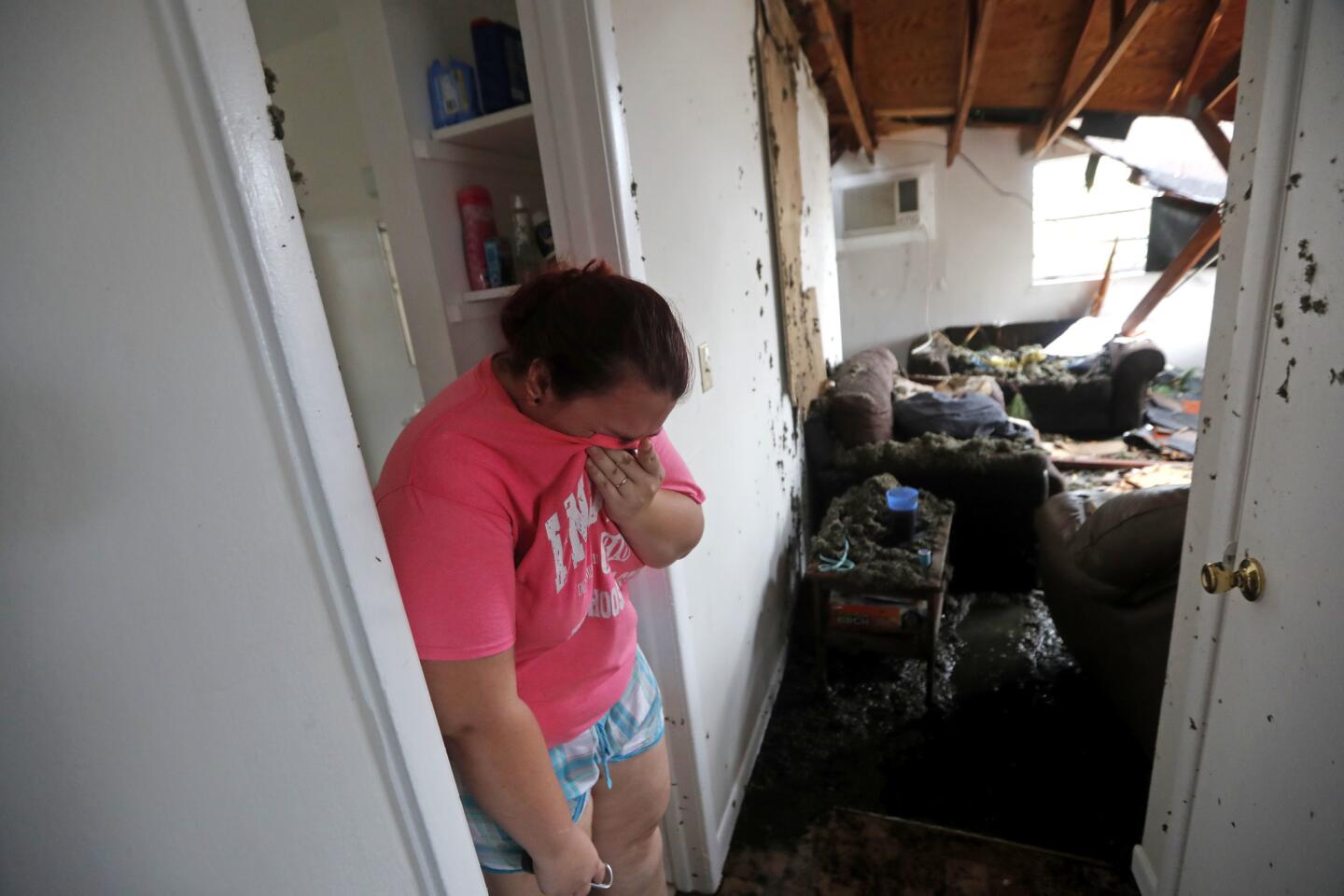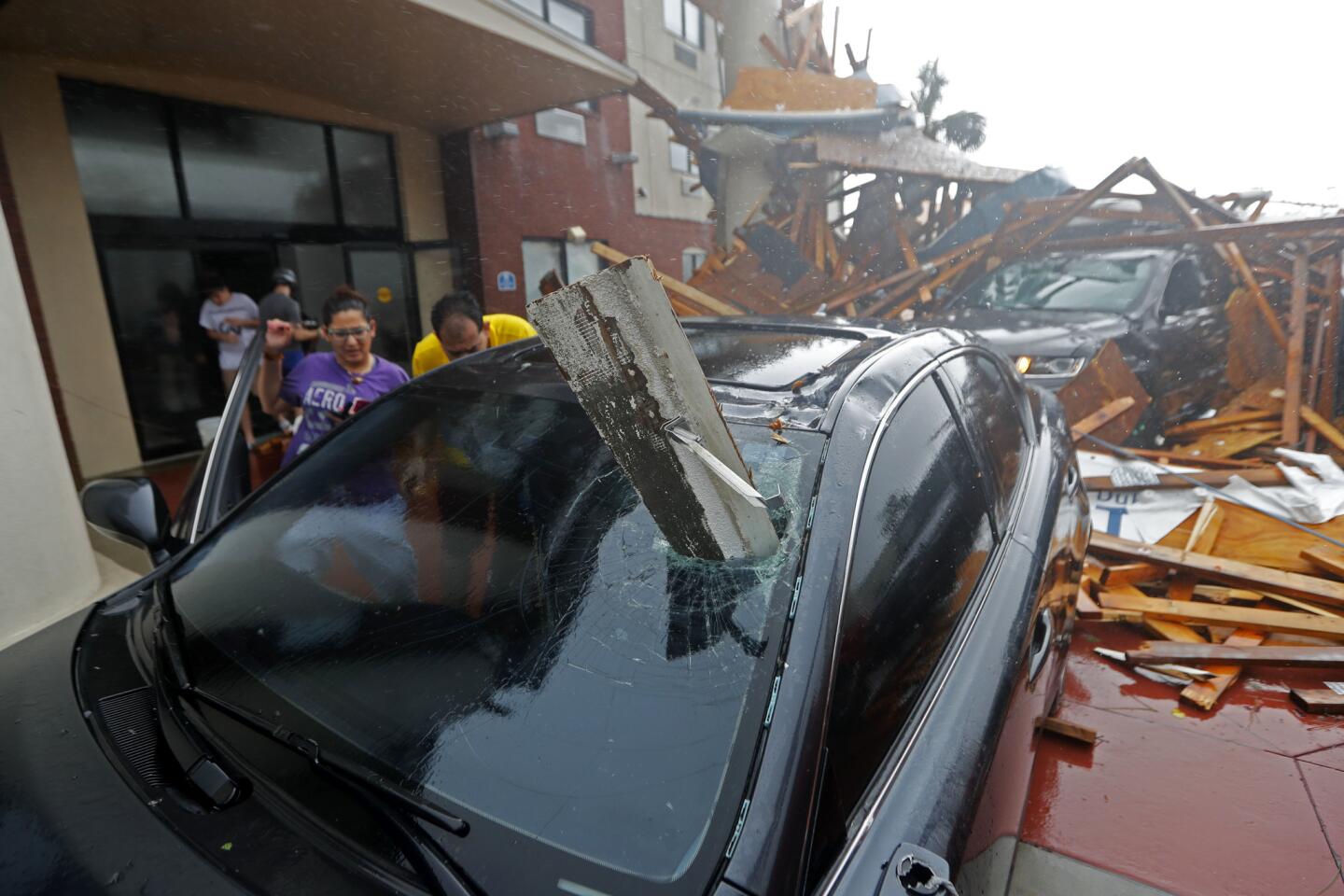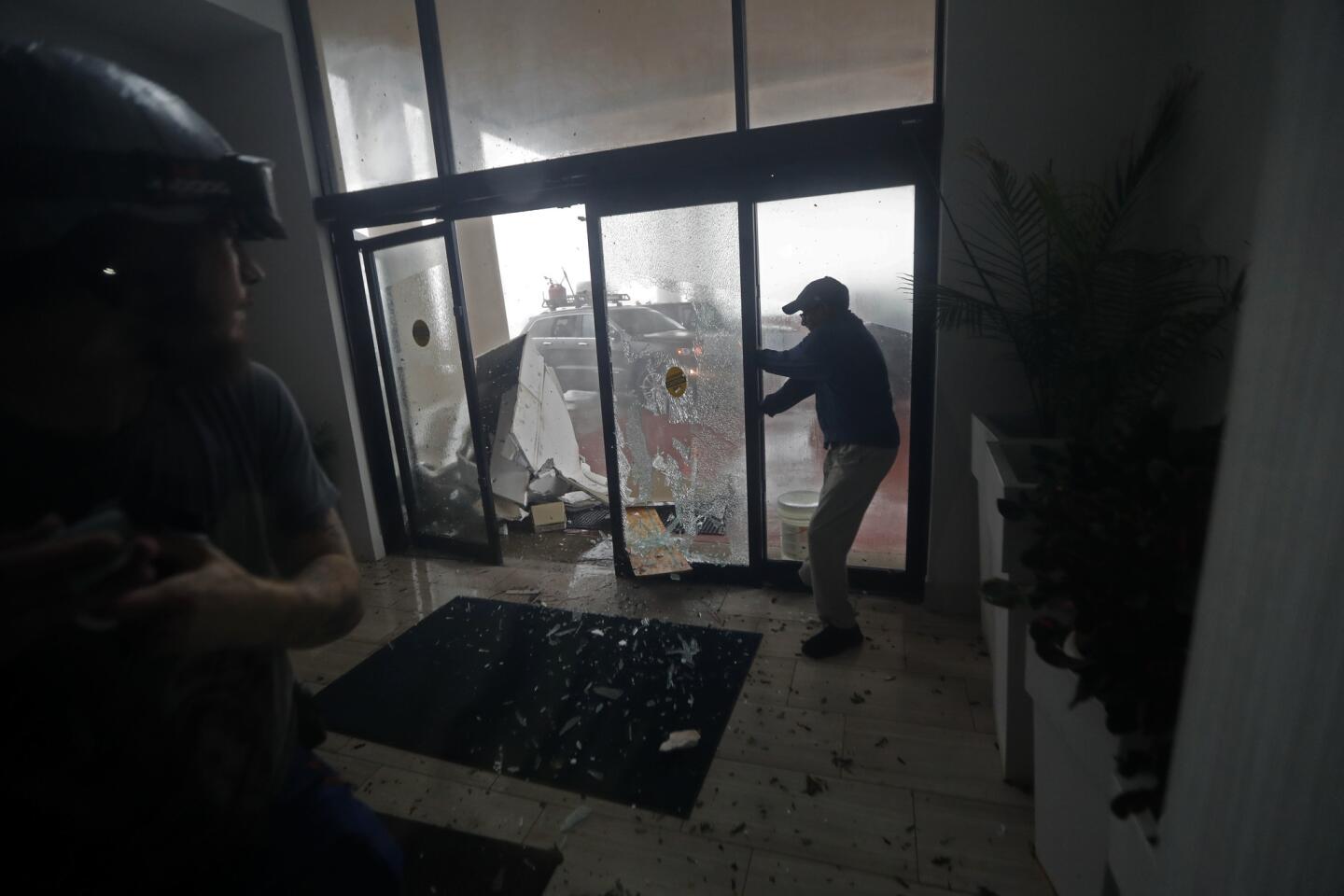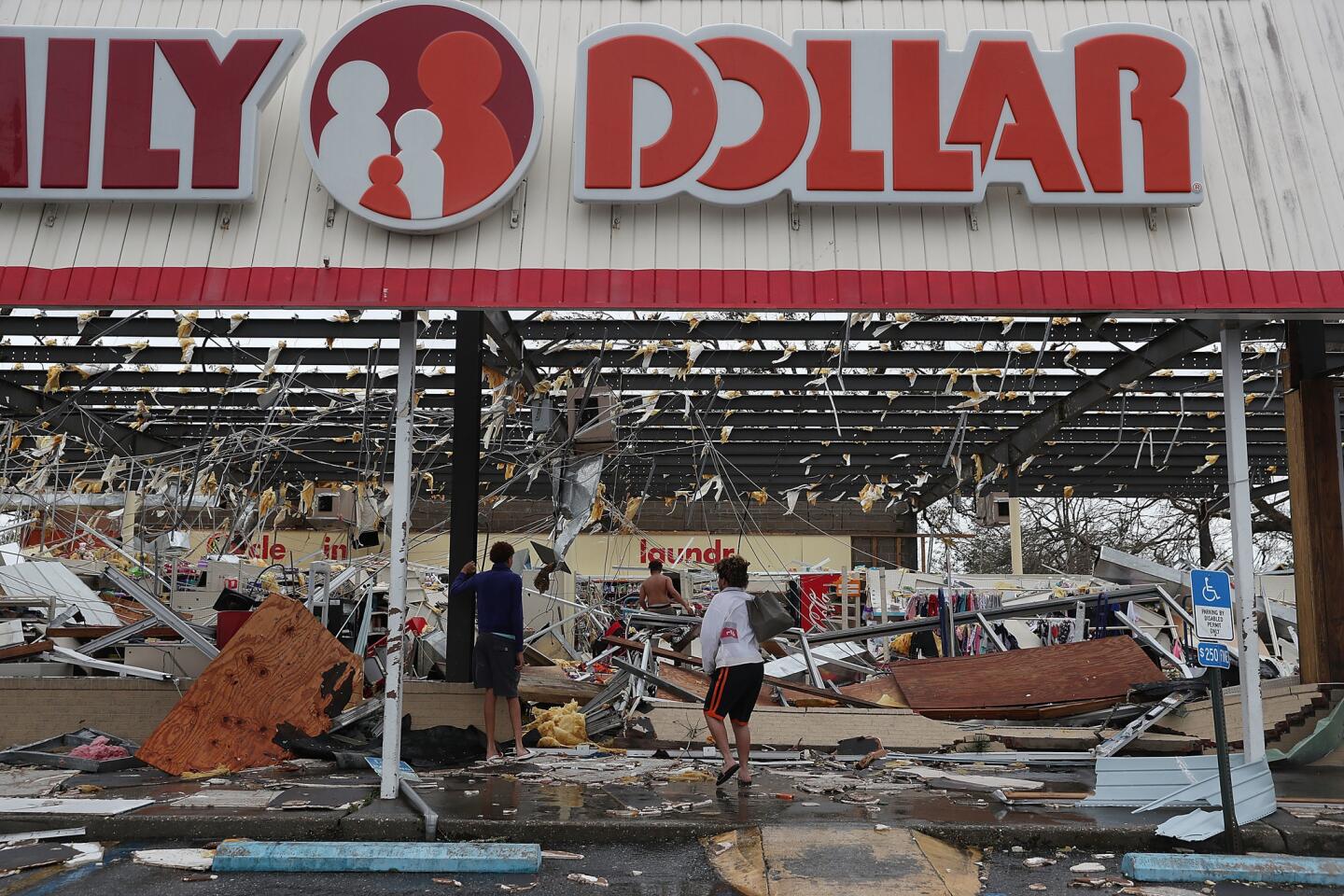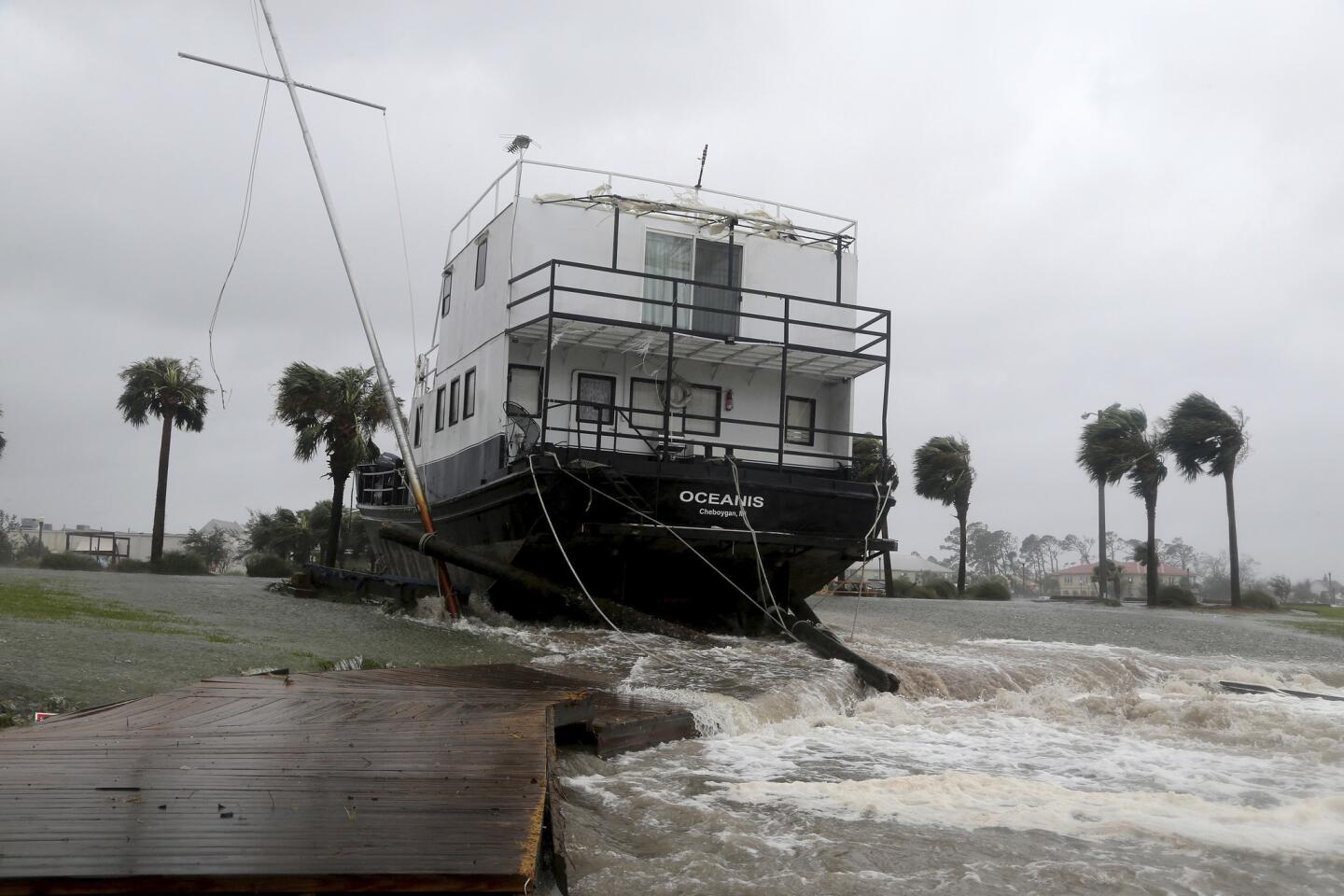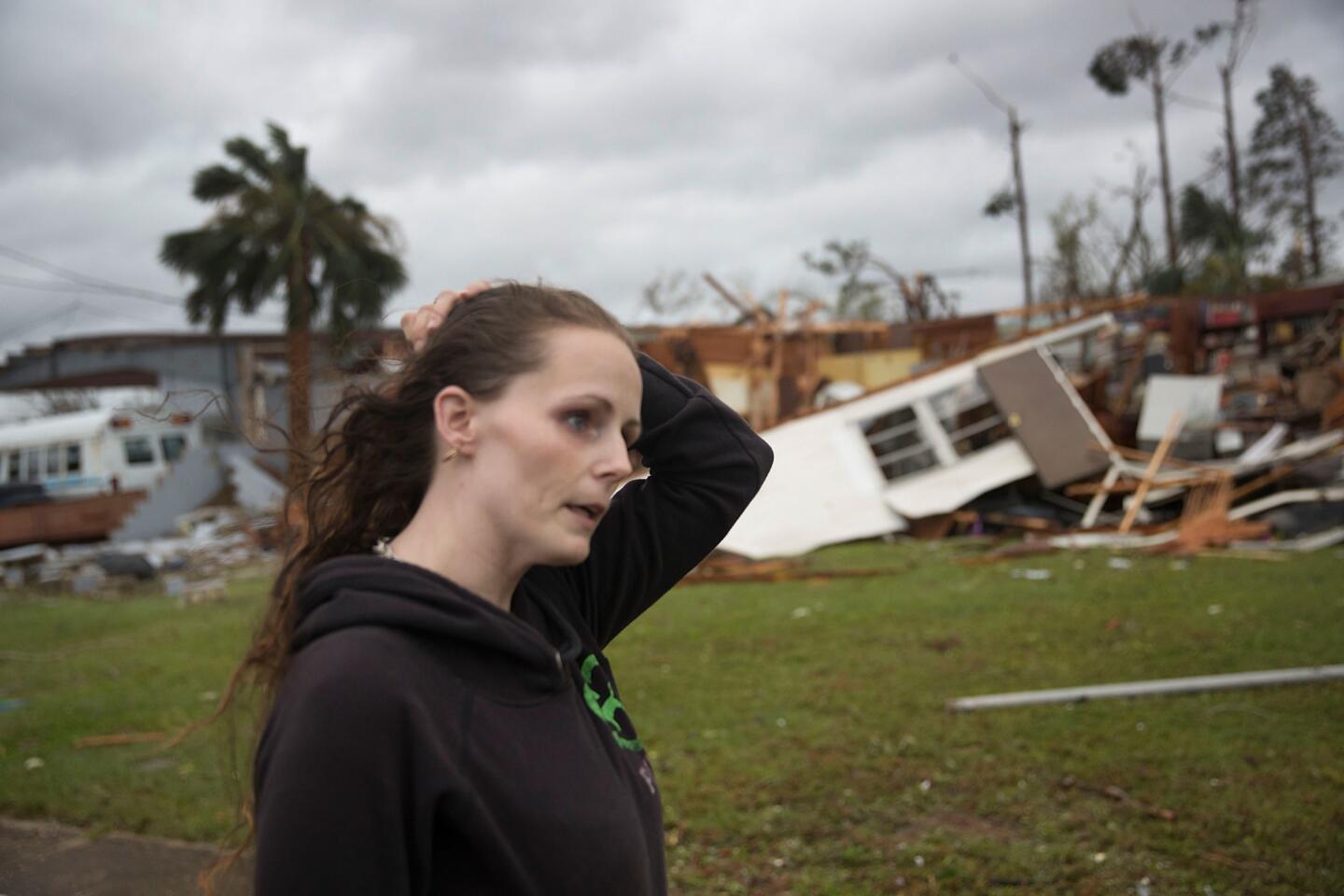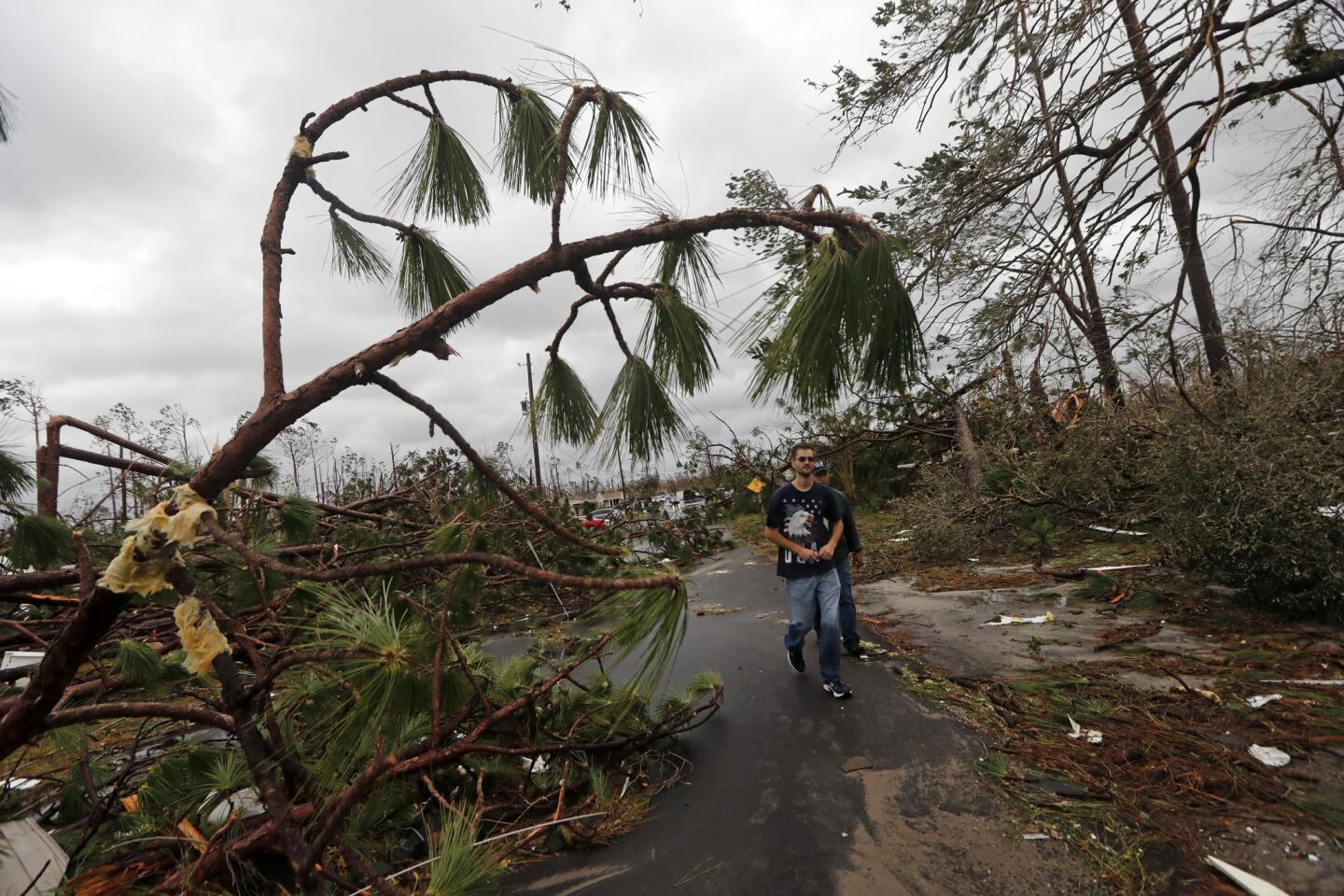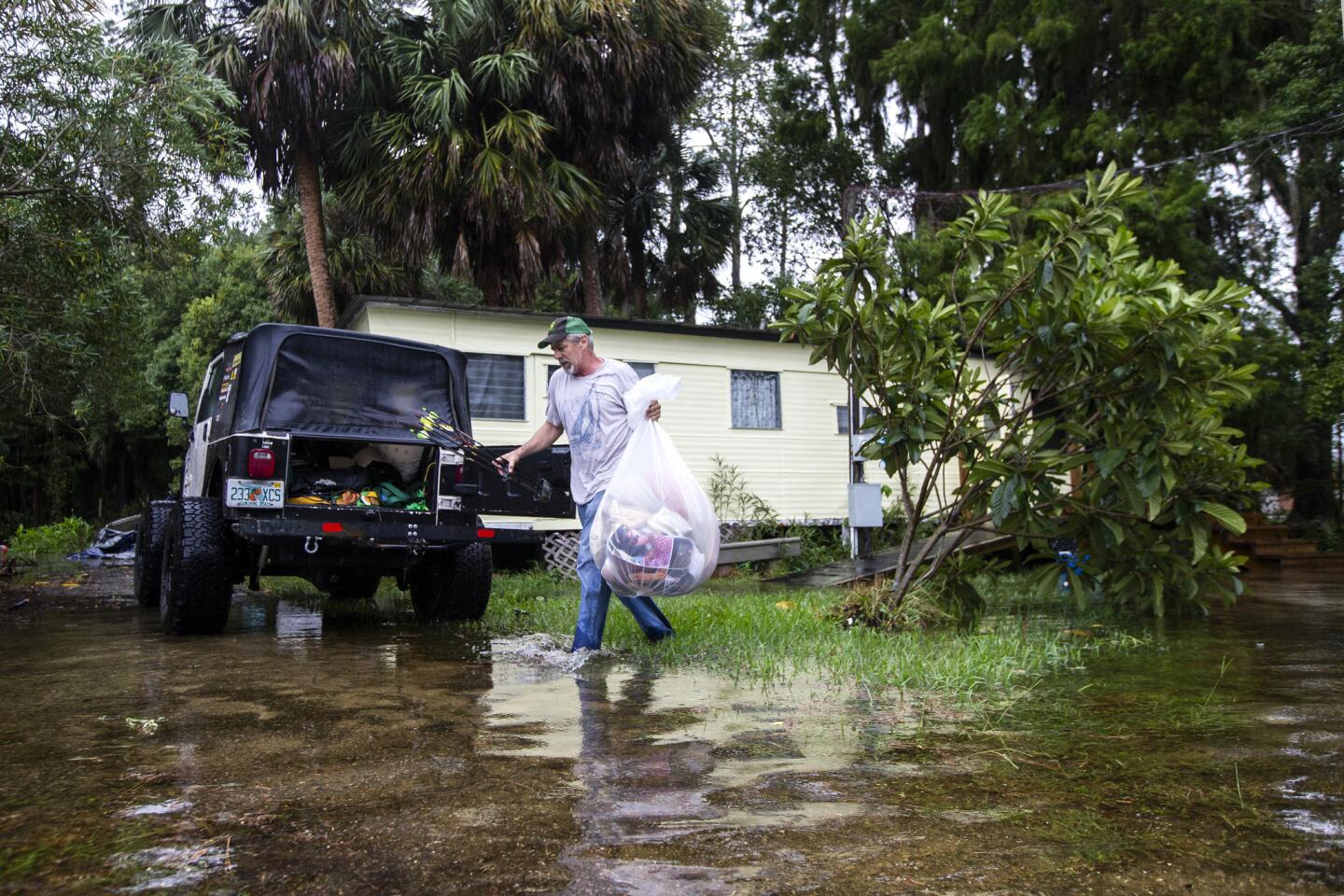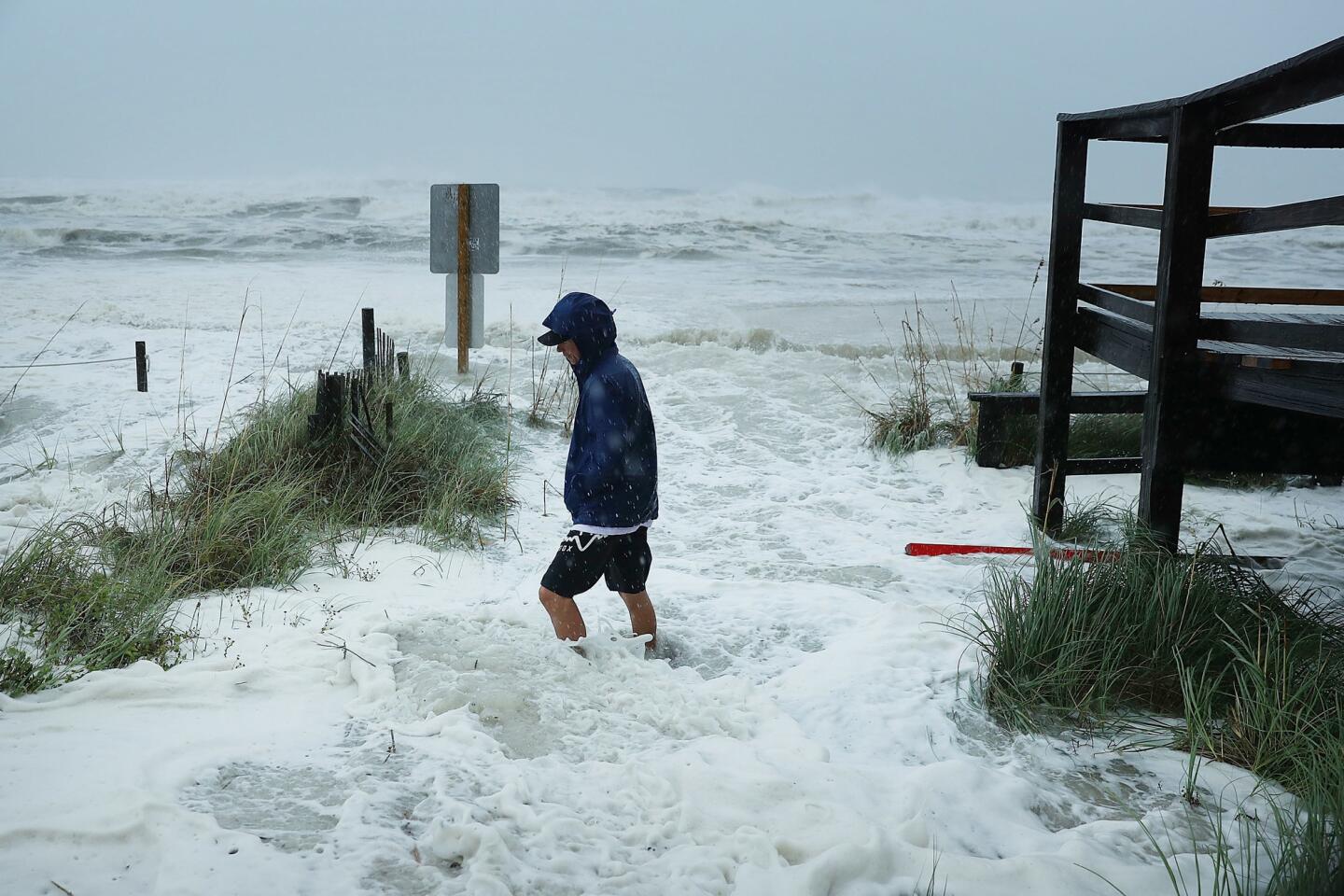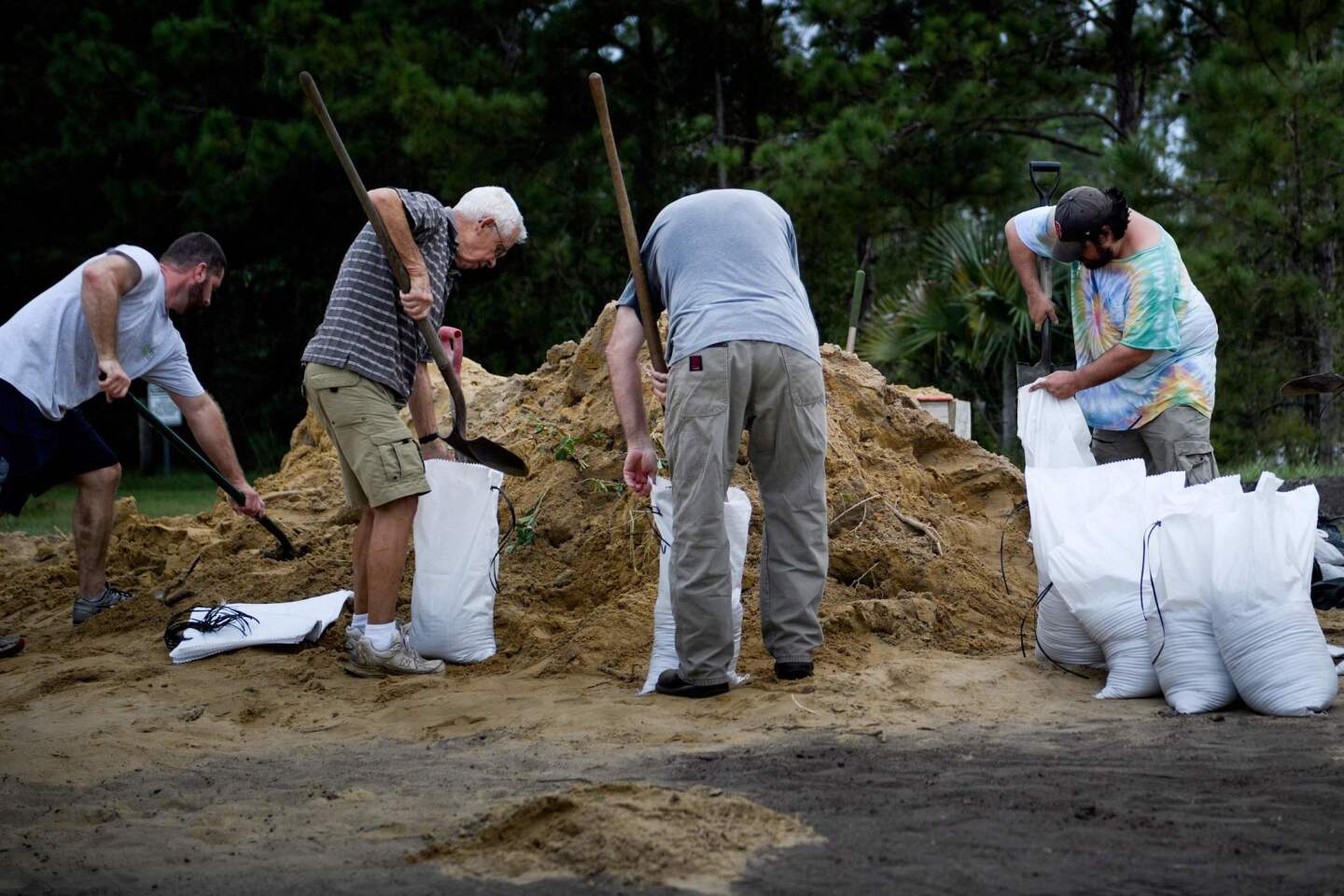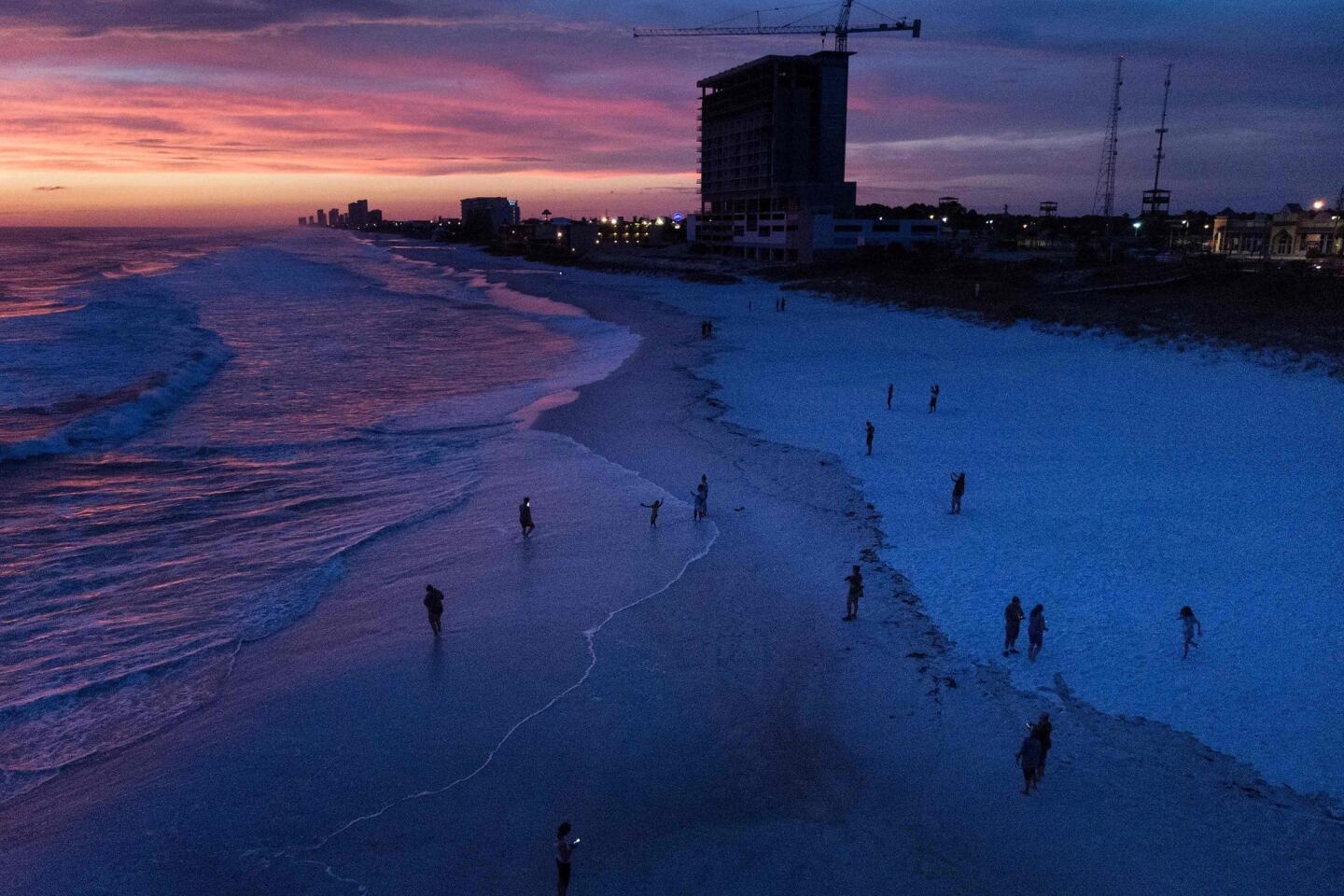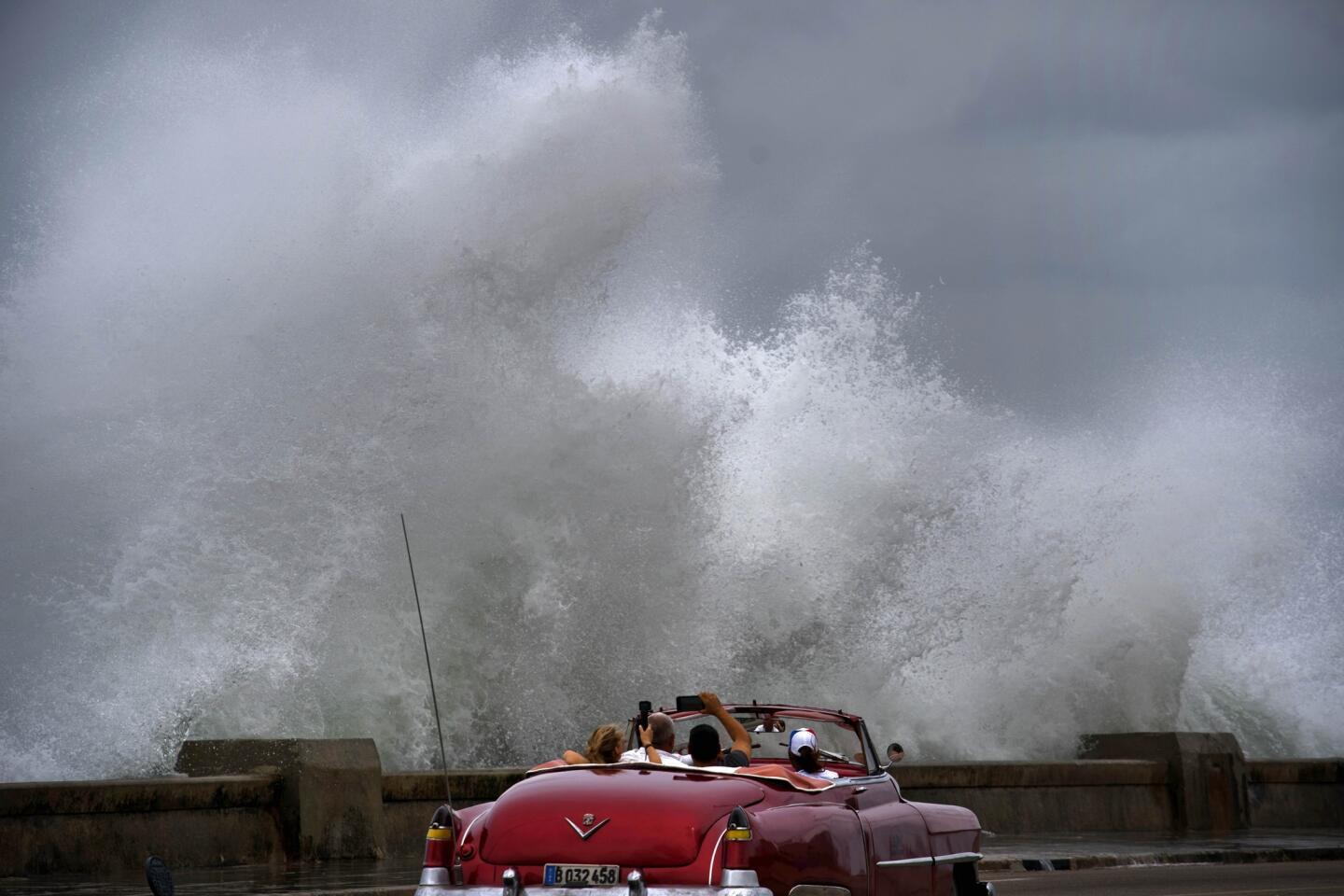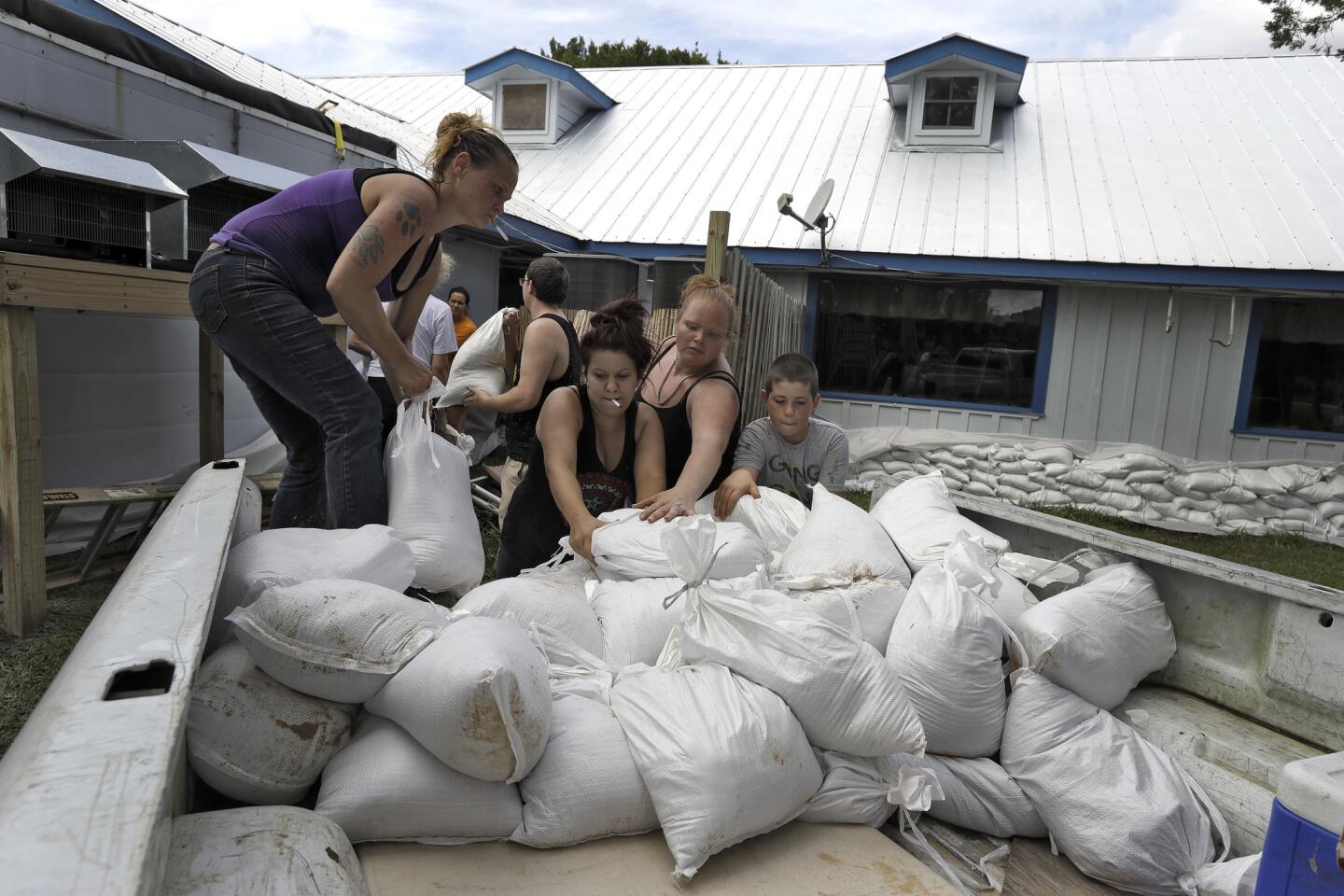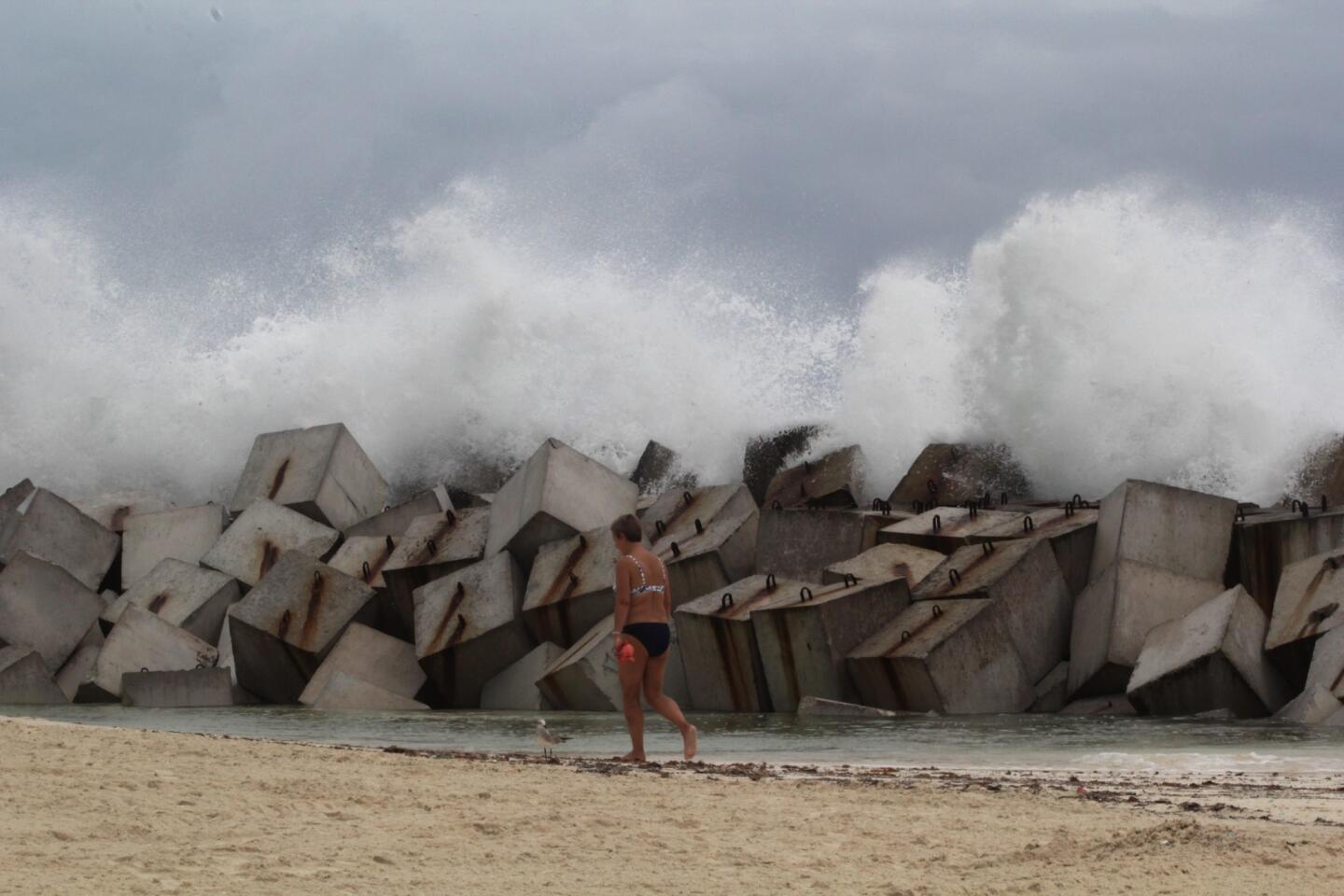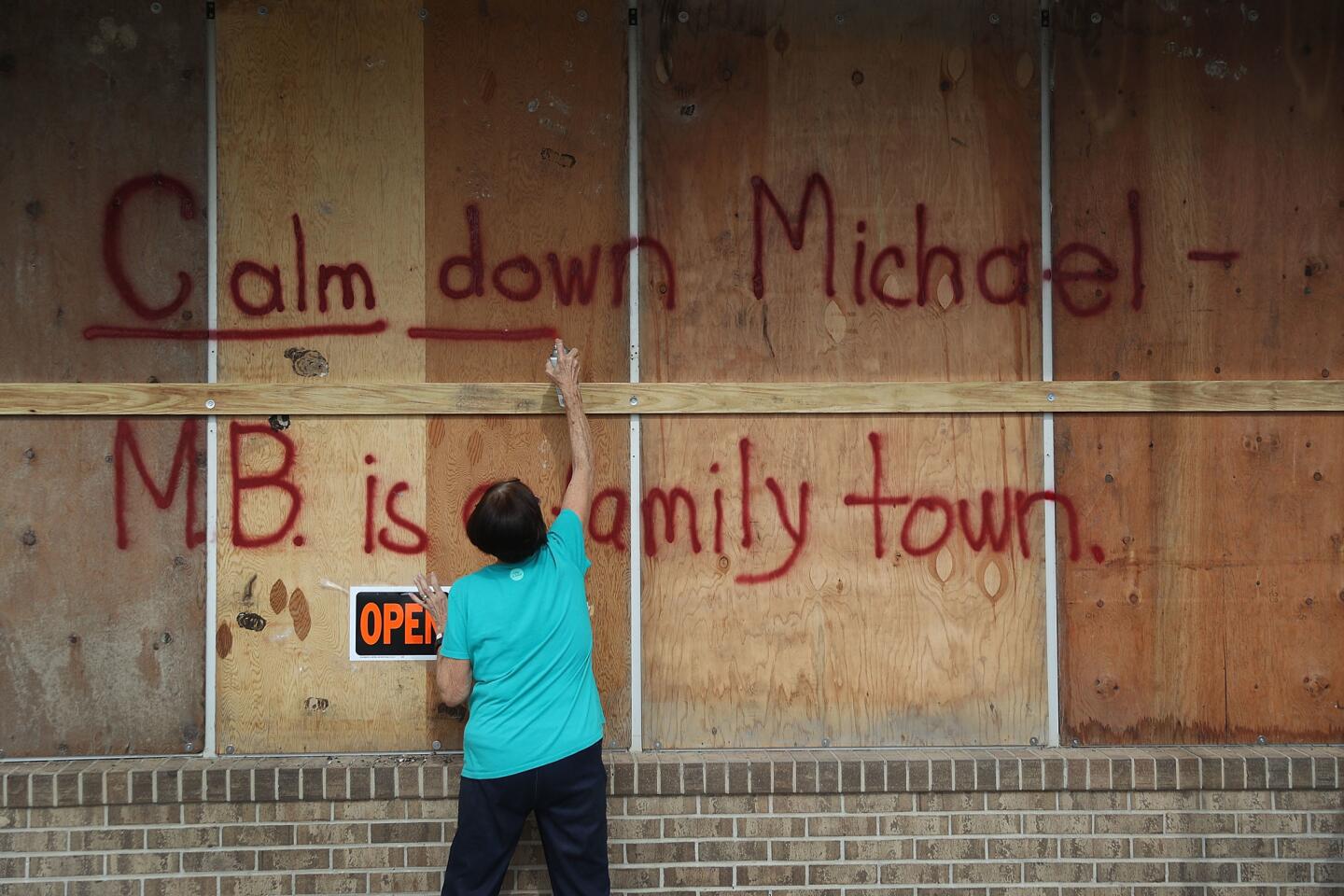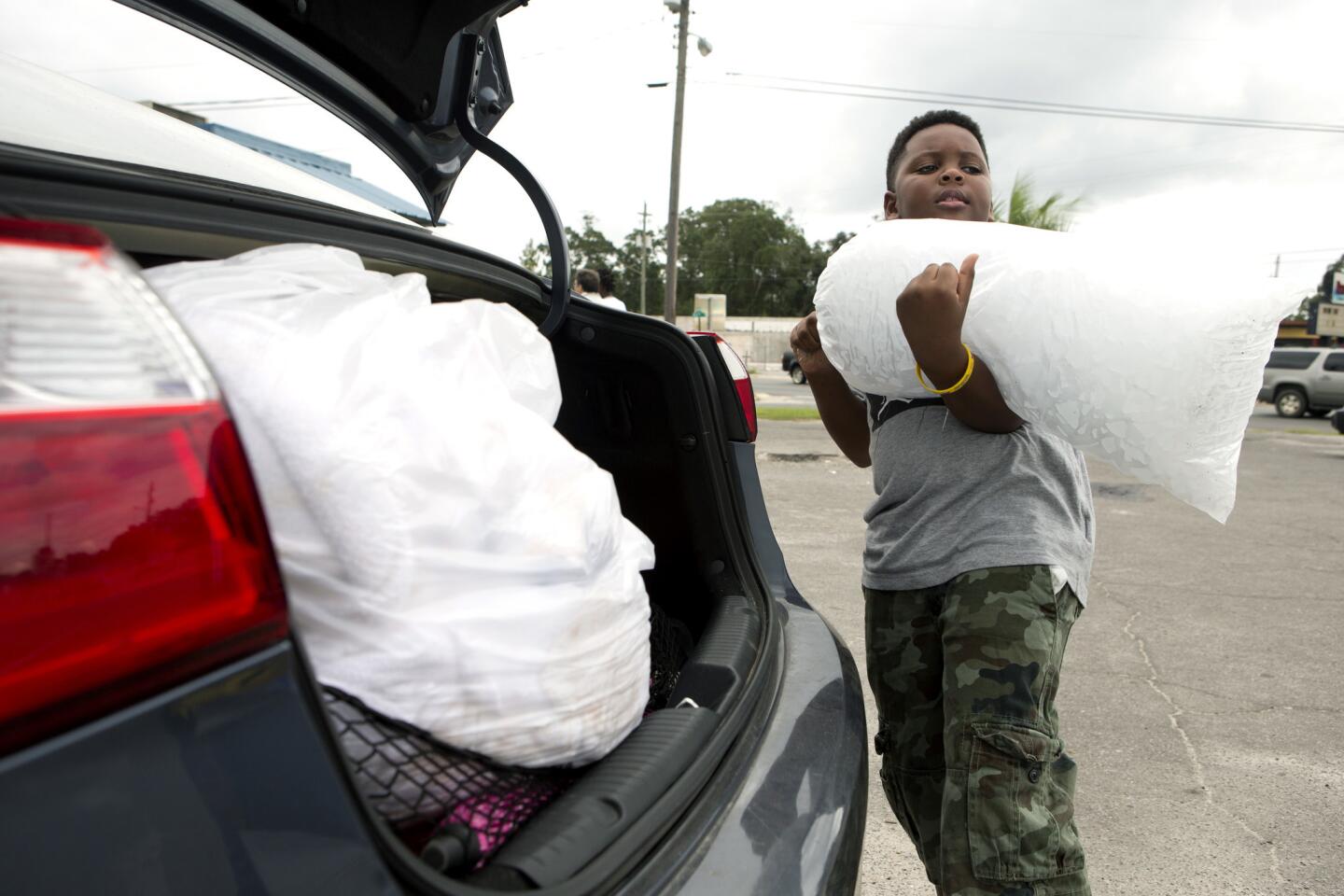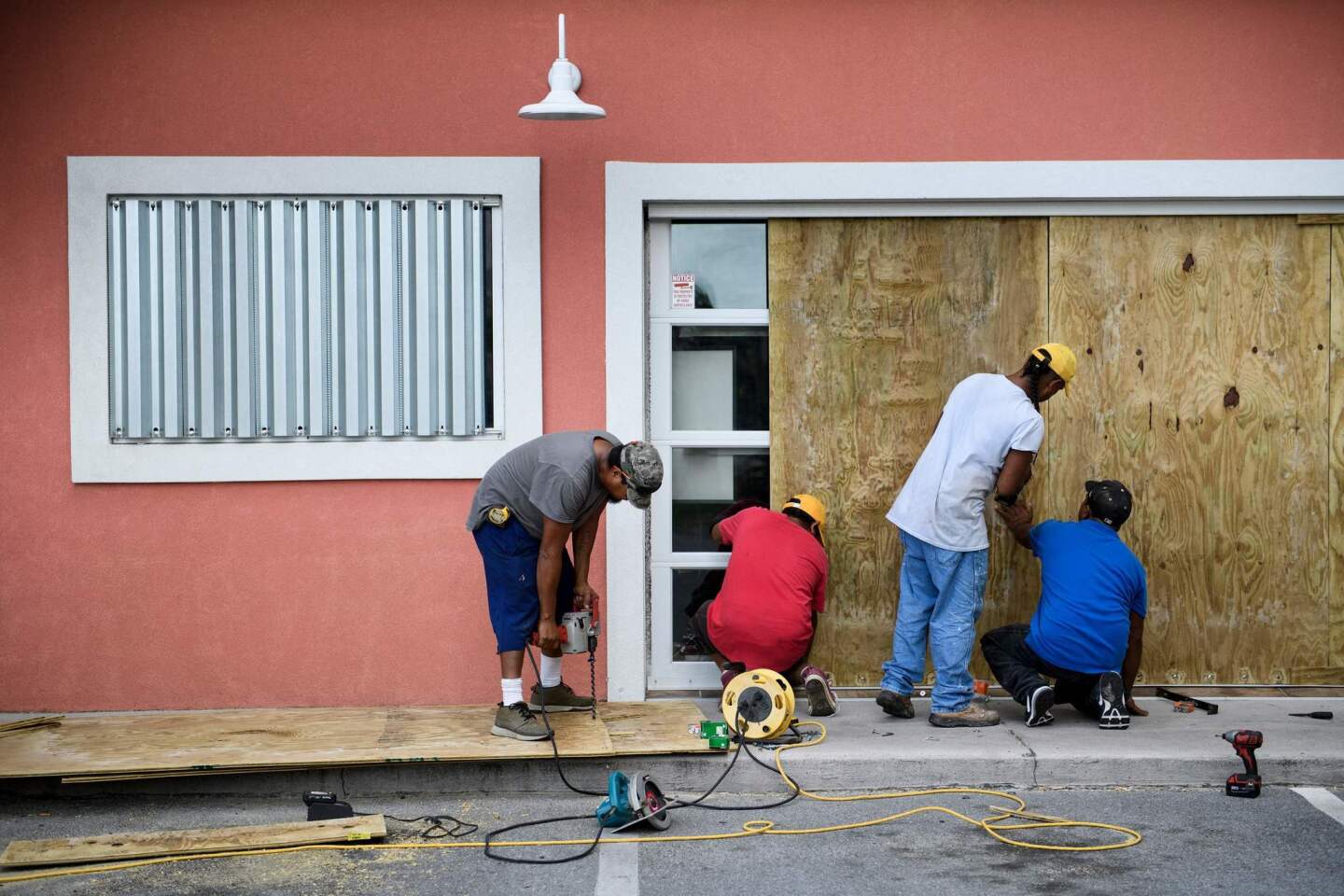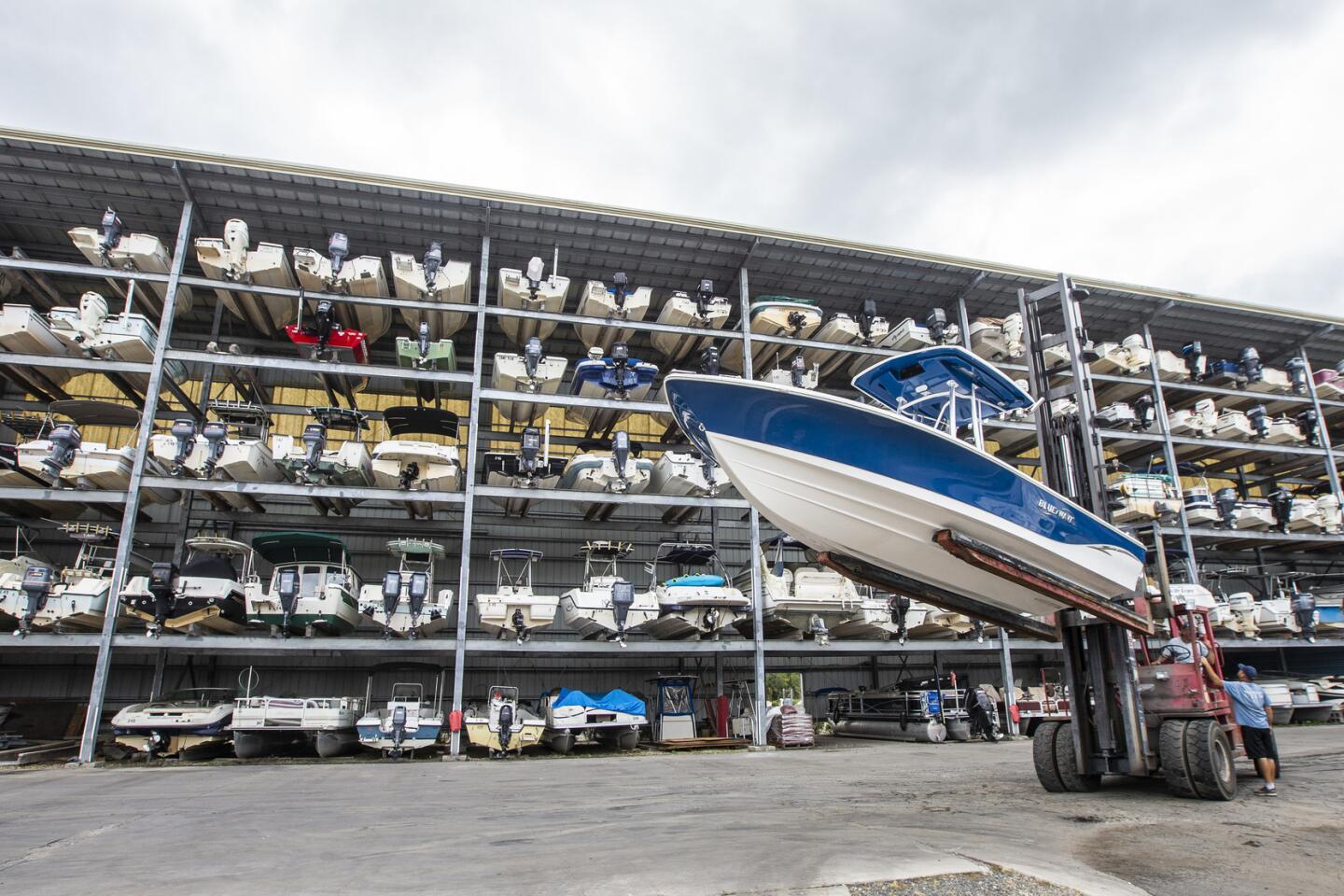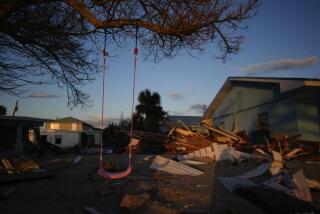Florida sifts through the wreckage left by Hurricane Michael, one of the strongest hurricanes ever to hit the U.S.
Reporting from PANAMA CITY, Fla. — Residents of the Florida Panhandle began taking in scenes of destruction Wednesday night, hours after Hurricane Michael slammed into the coast with a fury that ranked it among the most powerful storms ever to hit the United States.
“It’s all gone,” Deep Patel, 24, said as he stared at the remains of his duplex bedroom in Panama City, near where Michael made landfall as a Category 4 storm in the afternoon, packing winds of 155 mph. Most of the wooden rafters had been ripped off, exposing an upturned mattress. A bathtub landed a few houses away in a neighbor’s yard.
For the record:
8:00 p.m. Oct. 10, 2018An earlier version of this article misspelled the last name of Jonathon Klepatzki, one of those who sought refuge at a hotel.
His mother, Hemlata Patel, sobbed as she picked up a bright red-and-gold sari from the grass, a white patent leather sandal from the street and a tangled pile of papers and clothes hanging from a stop sign.
“Is anyone hurt?” a police officer asked via loudspeaker as he passed in a cruiser. “Is everyone OK?”
The Patels nodded and the cruiser drove on.
Late in the day, authorities announced the launch of medical search-and-rescue missions and supply shipments across the region as officials sought to evaluate the extent of the devastation caused by the storm, which flooded coastal communities and unleashed winds that scoured cities dozens of miles inland.
“We are deploying a massive wave of response — we will be sending help from air, land and sea,” Florida Gov. Rick Scott said in a televised news conference.
It was too soon to get a clear picture of the scale of the storm’s damage, which was expected to be extensive. After making landfall near the small town of Mexico Beach around 1:30 p.m. Eastern time, Michael barreled inland toward Tallahassee and Georgia, according to the National Weather Service.
A man was reported killed in Gadsden County, Fla., after a tree collapsed on a home Wednesday evening, according to the Gadsden County Sheriff’s Office.
At a two-story Quality Inn hotel in Panama City, some people who had evacuated their homes had initially gone on a balcony to snap photos and video of the storm. The powerful winds drove them inside, tossing tree limbs across the street and ripping off the hotel’s roadside sign.
The hotel walls shook. In Room 235, Jonathon Klepatzki, a 30-year-old meteorology research student from Jacksonville, said he heard a wall crack and then watched a chunk of drywall hit his flat-screen TV. Above, there were loud thuds as the wind ripped shingles off the roof and siding off the building.
After huddling in her room hoping the roof didn’t fall off, Roxanna Scott, 31, a finance worker from Panama City Beach, emerged to a balcony strewn with metal panels and insulation foam. Below, a pine tree had snapped and fallen on a white Ford F-150.
“This is scary,” Scott said.
After the storm passed, Panama City resident Paul Dean began to rip out loose insulation at his one-story cinder-block home. The storm tore down a cluster of pines in his front yard and ripped a hole in his ceiling.
The 59-year-old documentary filmmaker and four friends had ridden out the storm inside the house, piling a leather sofa, mattress, armchair and refrigerator against the windows. Eventually, they retreated into the bathroom as the windows shattered.
“It was hairy,” he said as he stood in a puddle of rainwater in his living room. “You could hear the trees cracking, and it sounded like a million matchsticks.”
Roads throughout the city were impassable after Michael ripped up pine and live oak trees, downed power lines, smashed billboards and tossed railroad freight cars onto highways.
Winds flattened a small Metro PCS store, punched out every letter in a Waffle House sign, tore the back corner off a Super 8 motel and ripped up a cinder-block wall at the Panama City Mall.
In Port St. Joe, southeast of Mexico Beach, the wind snapped pine trees in half, sending some trunks tumbling onto power lines. In Walton County, to the west of Panama City Beach, a deputy shot a photo of a yacht that had been blown onto the shore, its sail shredded into strips of cloth, still clinging to the mast.
Emergency officials across the region, fearing for their own safety, temporarily stopped responding to 911 calls from residents who hadn’t evacuated. Some area newsrooms lost power, cutting off the flow of information from local journalists covering the storm. Cellphone service was poor.
For days, local residents and officials had braced for Hurricane Michael’s arrival as the storm drew strength from the warm waters of the Gulf of Mexico.
In the final hours before coming ashore, the storm’s pressure continued to drop — a sign that Michael was getting stronger, not weaker, as it bore down on the Florida Panhandle, which had no record of facing such a powerful hurricane.
In Mexico Beach, visibility dropped to nearly zero as intense winds ripped off roofs and uprooted signs. Several feet of storm surge then consumed part of the city, flooding some homes up to their roofs.
The National Weather Service said the hurricane made landfall just 2 mph short of being classified a Category 5 storm.
Local media reports said that one of the area’s barrier islands, Dog Island, which is accessible only by boat, was under water. On the mainland coast, powerful winds had begun ripping roofs from buildings and branches from trees as officials and residents huddled in shelters to ride out the worst of the hurricane.
The storm swept north-northwest over the northeastern Gulf of Mexico early Wednesday, generating official warnings for residents to seek shelter.
Michael was forecast to lash coastal areas of Florida, Alabama and Georgia with as much as 12 inches of rain. Farther inland, damaging winds, torrential rain and life-threatening flash floods were forecast for parts of Georgia and Alabama.
Before dawn, residents along the Florida Gulf Coast had scrambled to shelters as the National Hurricane Center called Michael “potentially catastrophic” and warned of a life-threatening storm surge, powerful winds and torrential rain.
More than 2 million Florida residents were under mandatory or voluntary evacuation orders and a hurricane warning was in effect from the Alabama state line to the mouth of the Suwannee River. A storm surge warning was also in effect from Florida’s Okaloosa-Walton county line to the Anclote River near Tampa.
The National Hurricane Center expected Michael to move inland and then weaken as it moved northeast across the southeastern United States on Wednesday night and Thursday.
As rain bore down in Panama City, a steady stream of evacuees filled Rutherford High School, hauling yapping dogs, crying babies, blankets, mattress pads, oxygen tanks, folding chairs, crates of water and grocery bags stuffed with Wonder bread and Doritos.
Patricia Barnes, a 76-year-old retired bookkeeper, was a bit short of breath and her blood pressure was up when she arrived at the shelter. She had stayed up all night watching the TV news and comforting herself with the 23rd Psalm: “The Lord is my shepherd; I shall not want.”
Initially, she and her husband had planned to ride Michael out at their home in Lynn Haven, a small coastal town seven miles north — until they heard it had strengthened to a Category 4.
“It’s better to be safe,” she said.
Huddling in an outdoor breezeway while her sister put her Jack Russell terrier, Skooter, in a hallway reserved for pets, Barnes approached a volunteer: “You got a room for me?”
Shaking his head, the volunteer told her he only had space in open hallways. He scooped up her blankets and pillows and ushered her to a narrow hall lined with gray metal lockers.
Evacuees seemed to occupy every inch of the sprawling brick high school, spreading blankets and mattresses in classrooms, hallways and the cafeteria. Some rested their heads on wooden desks or curled up in sleeping bags on linoleum floors, while others passed the time playing cards, reading paperbacks or monitoring the hurricane on their cellphones.
In her rush to find a cab in the middle of the night to get her to the shelter, Tamika Rowe, 27, a criminology student who moved to the area a few months ago from Jamaica, had grabbed important documents such as her birth certificate and passport. She had not thought to bring blankets or pillows.
“It’s not going to be easy sleeping,” she said ruefully after she had picked a narrow space on a linoleum floor in a hallway.
More than 50 shelters were open across Florida. In Bay County, emergency officials urged residents to stay off the roads and warned those who still remained in their homes to stay inside and seek shelter in an interior room with few windows.
According to meteorologists, no Category 4 or 5 hurricane had made landfall in the Florida Panhandle since record-keeping began in 1851.
The last major hurricane to strike this part of Florida was Dennis, which made landfall as a Category 3 storm on Santa Rosa Island, about 40 miles east of Pensacola, in 2005. Since 1950, only two other major hurricanes have made landfall in the region: Eloise in 1975 and Opal in 1995.
In 2016, Hurricane Hermine reached land as a Category 1 storm, leaving hundreds of thousands of residents — including more than 80% of those in the state capital, Tallahassee — without electricity.
“We are with you Florida!” tweeted President Trump as the storm neared landfall. He is expected to visit the region next week.
UPDATES:
8 p.m.: This article has been updated with reporting on residents taking in scenes of destruction.
4:30 p.m.: This article was updated with a comment by the Florida governor and other details.
1:55 p.m.: This article was updated with comments from Florida residents who experienced the hurricane in Panama City and other additional details.
11:10 a.m.: This article was updated with Hurricane Michael making landfall near Mexico Beach, Fla.
9:35 a.m.: This article was updated throughout with Los Angeles Times reporting.
8:10 a.m.: This article was updated with a quote from John Hargan and news that Hurricane Michael is the most powerful storm on record for the area.
4:05 a.m.: This article was updated with the status of Tyndall Air Force Base and the latest data on the storm.
This article was originally published at 12:10 a.m.
More to Read
Sign up for Essential California
The most important California stories and recommendations in your inbox every morning.
You may occasionally receive promotional content from the Los Angeles Times.
